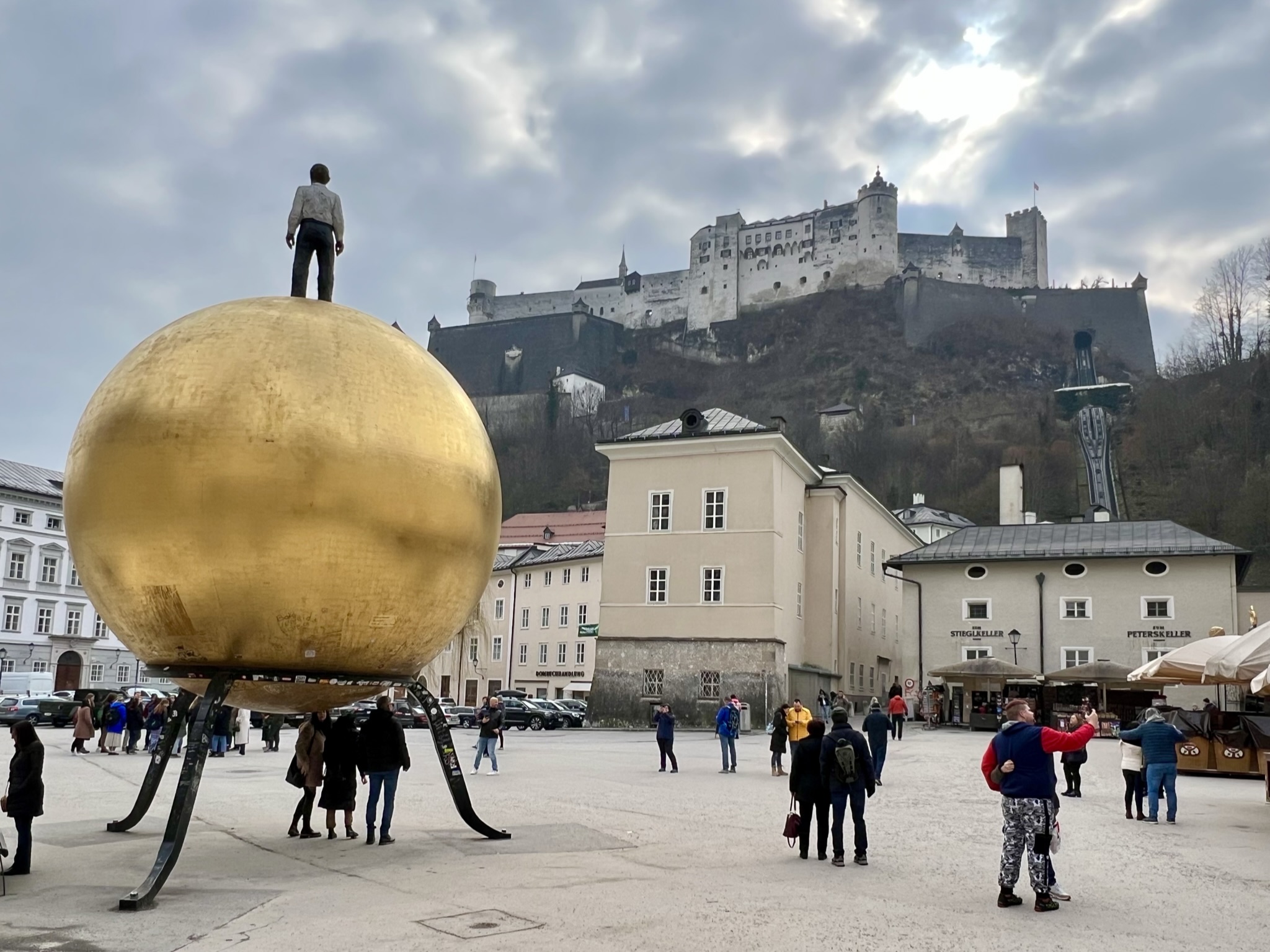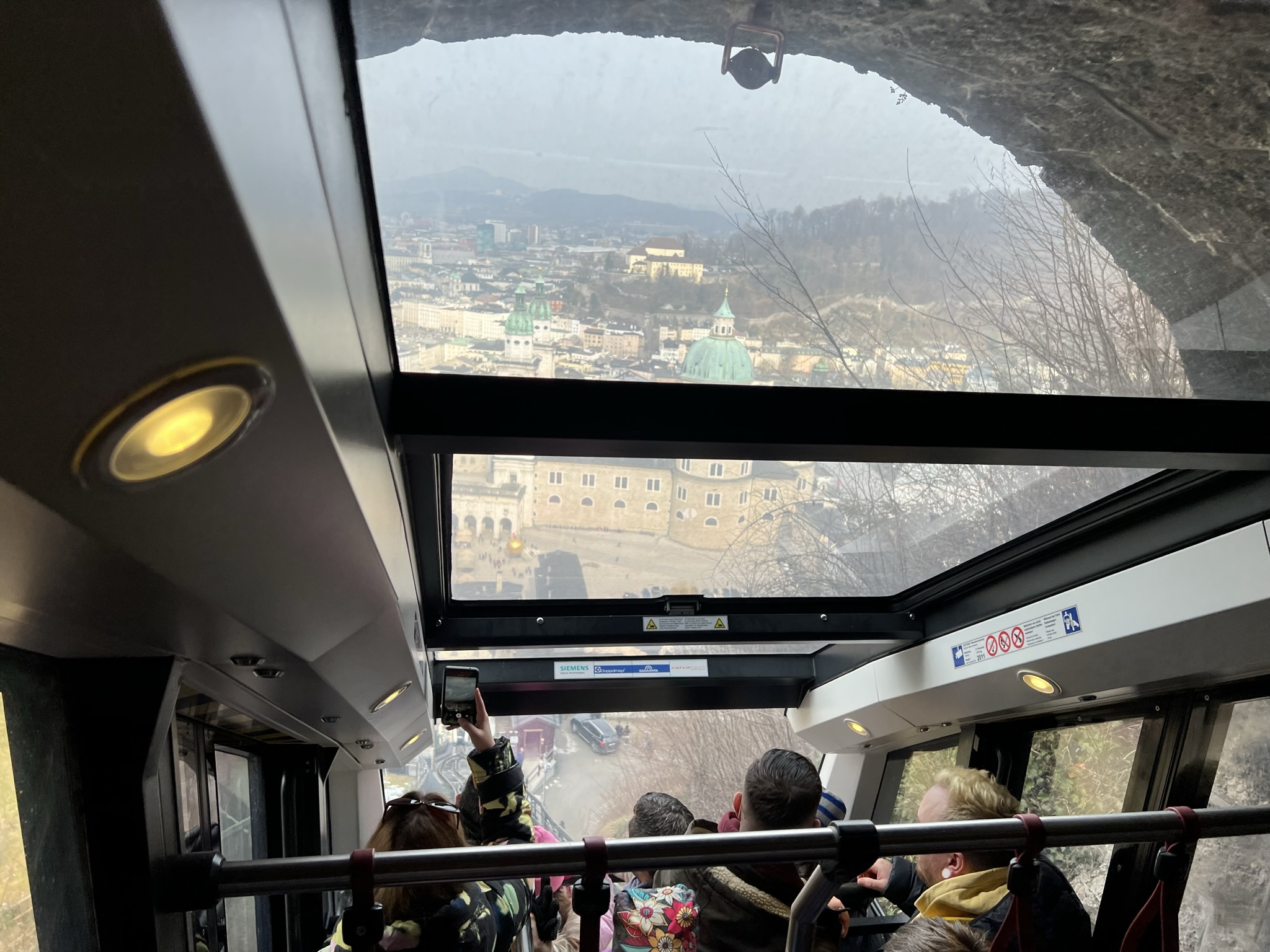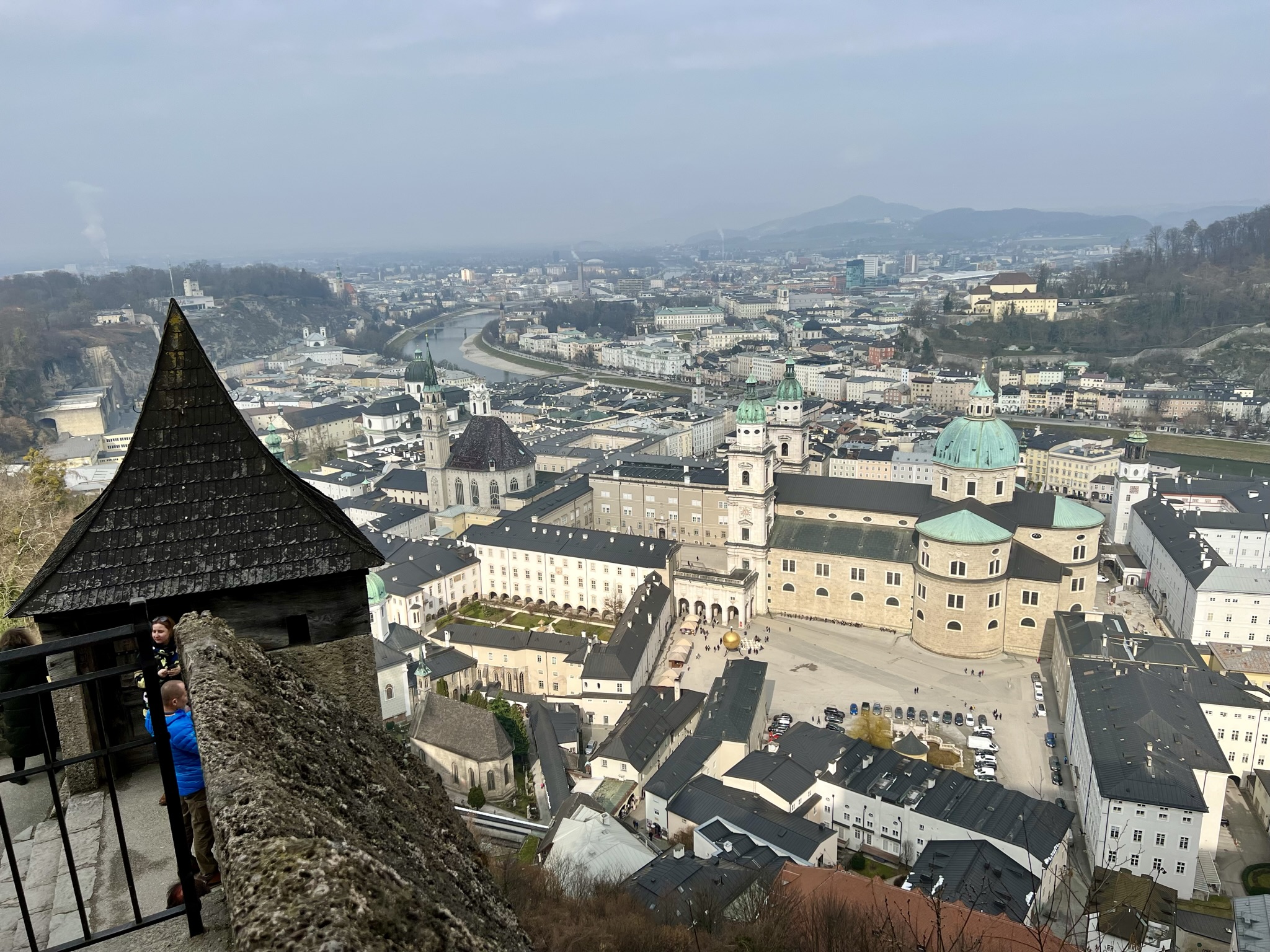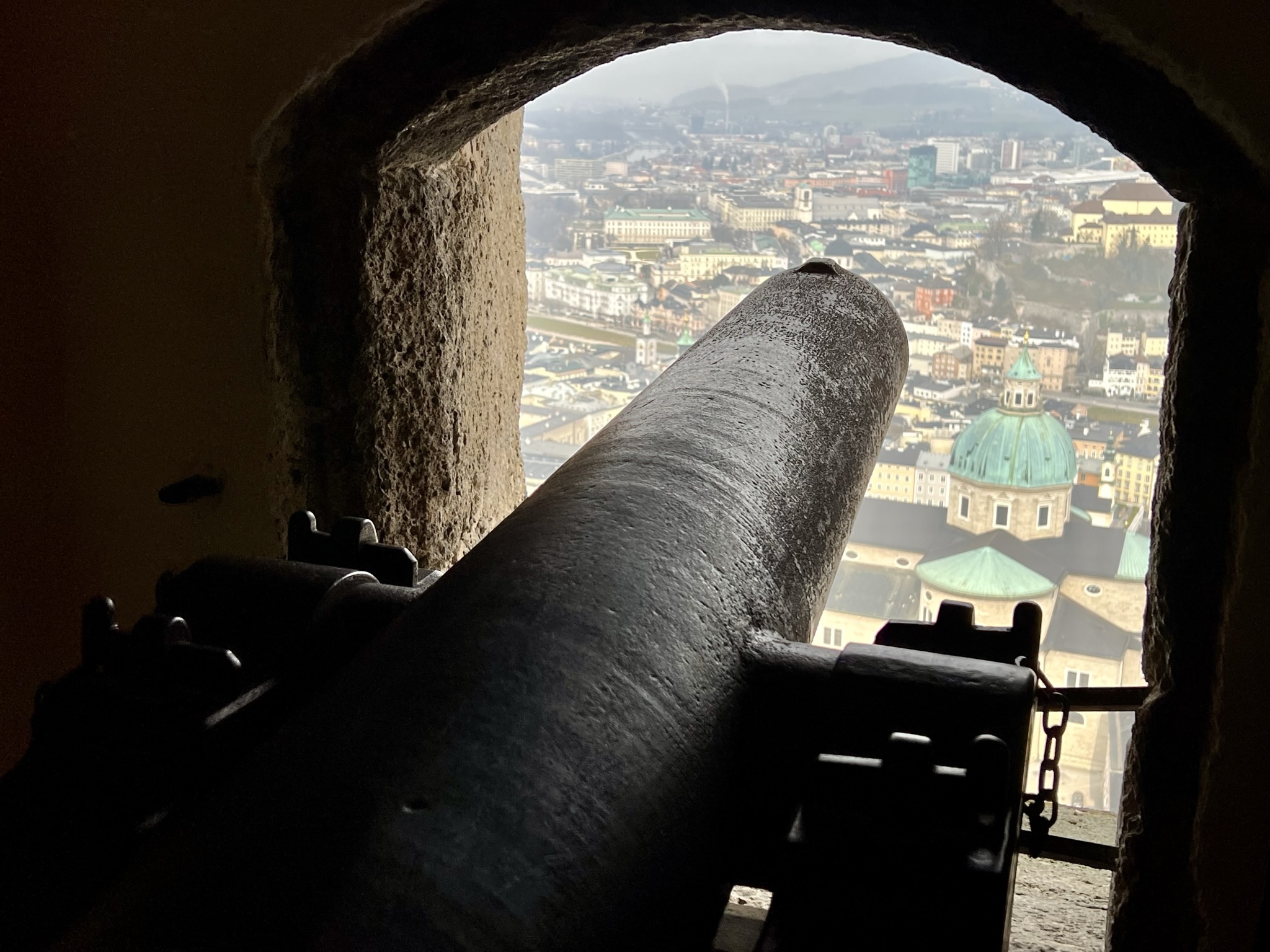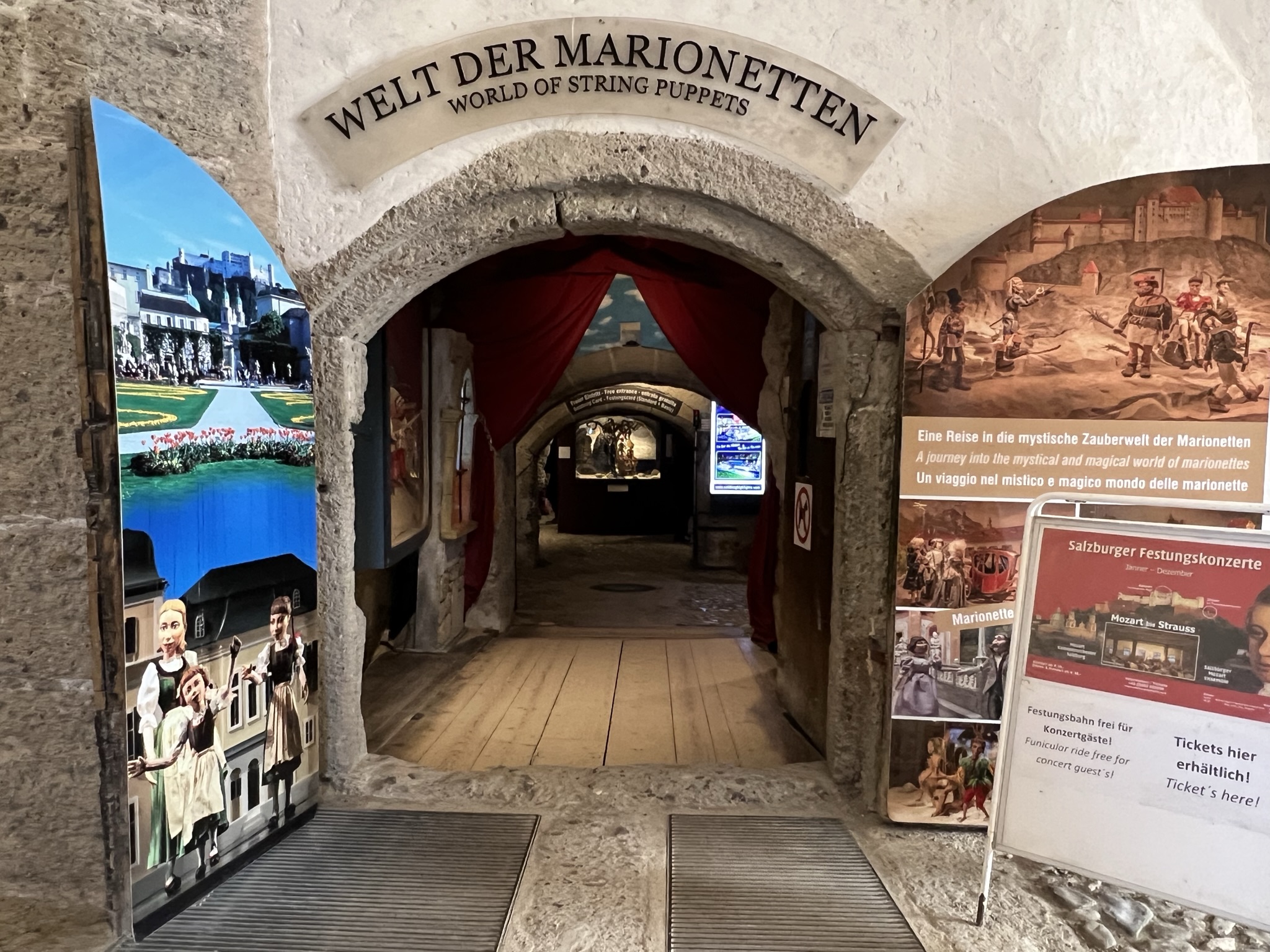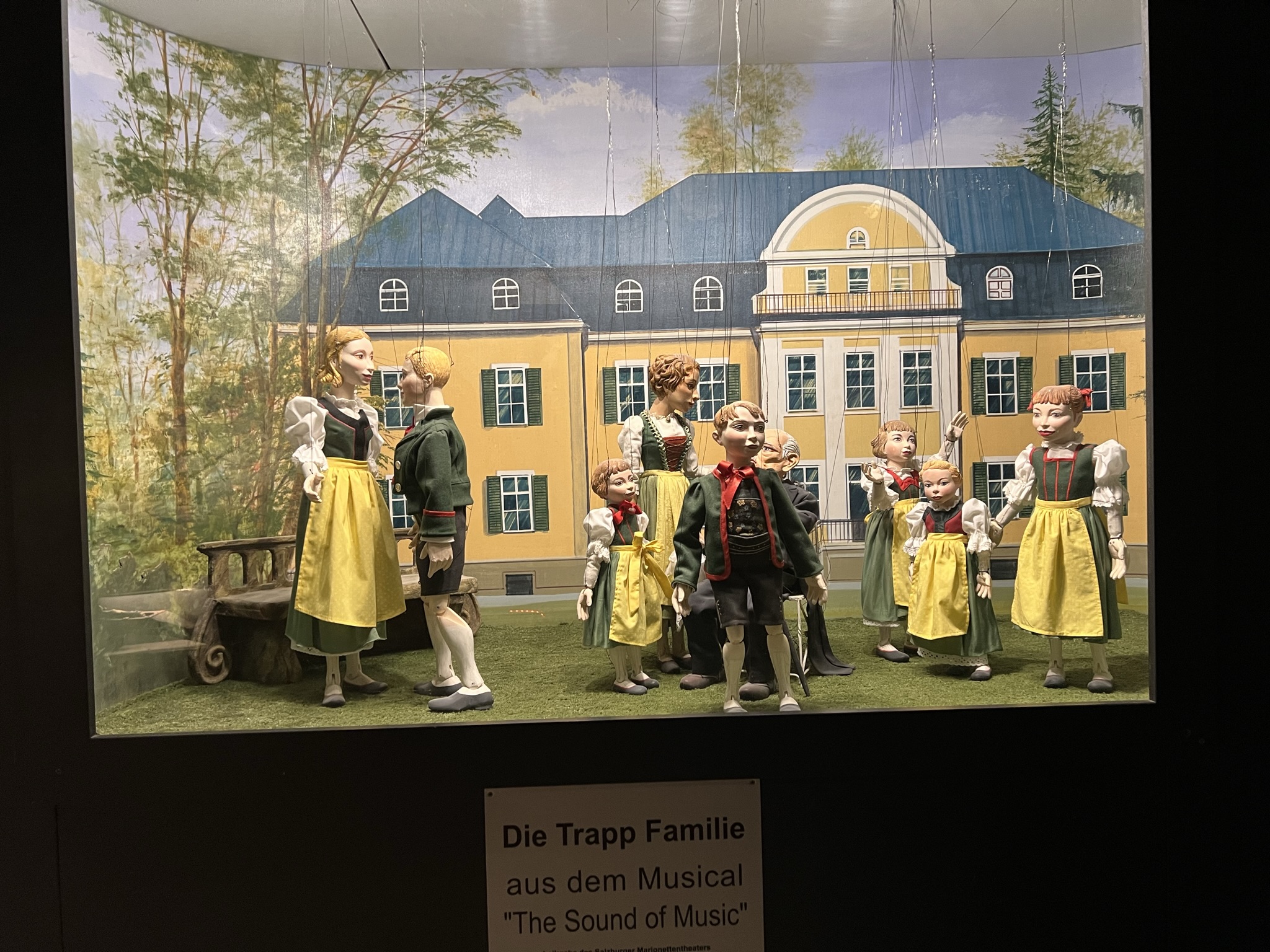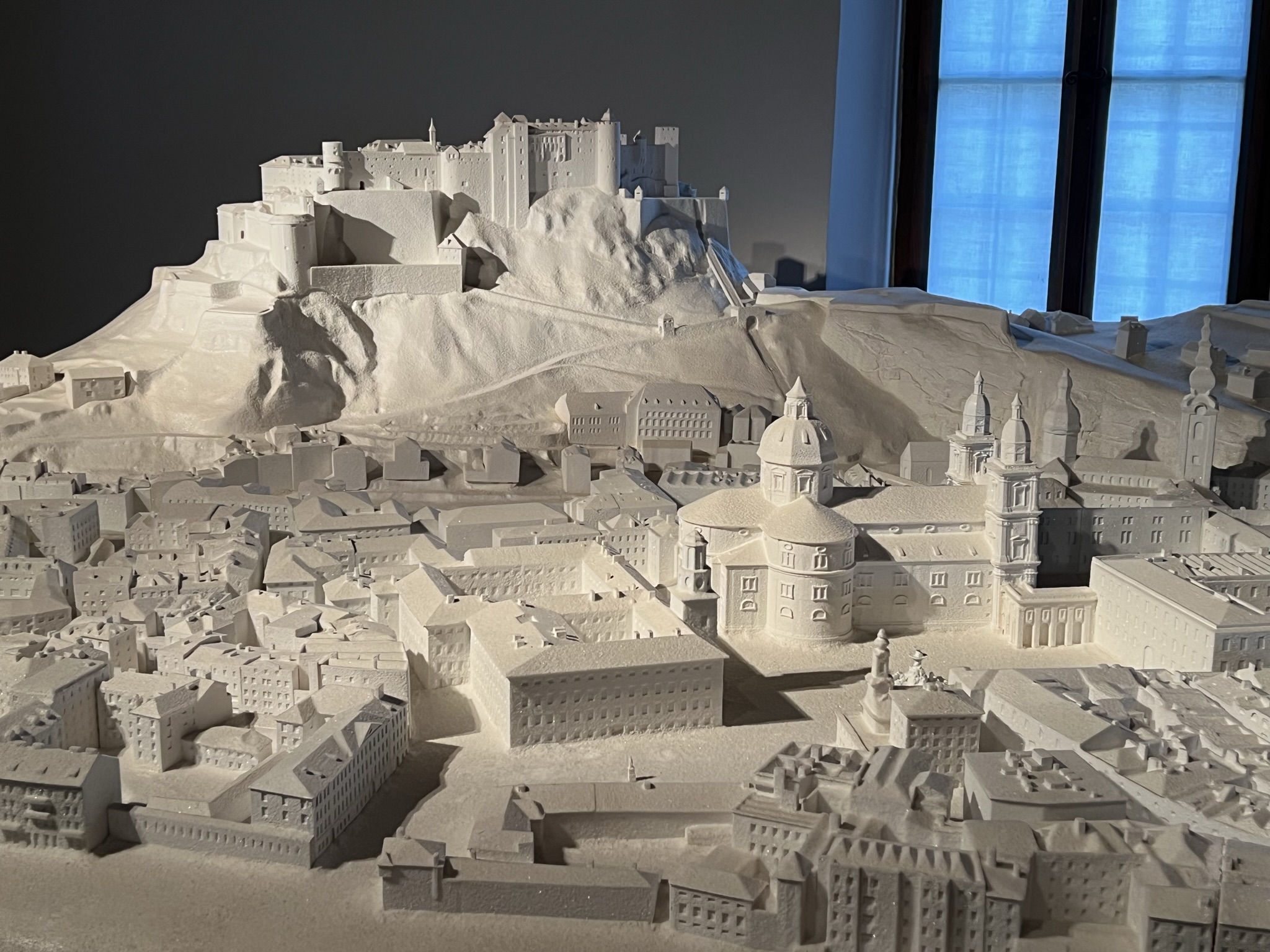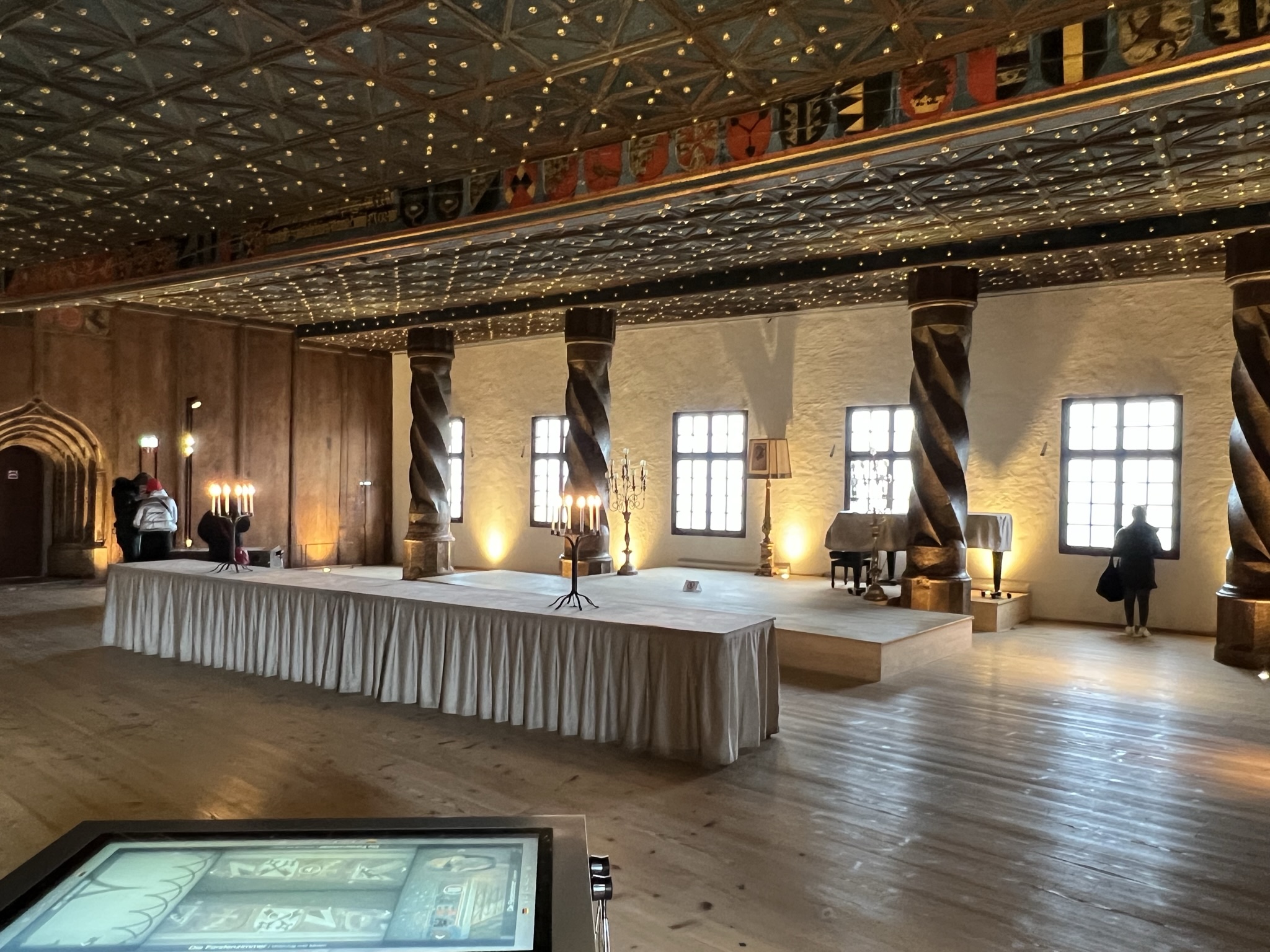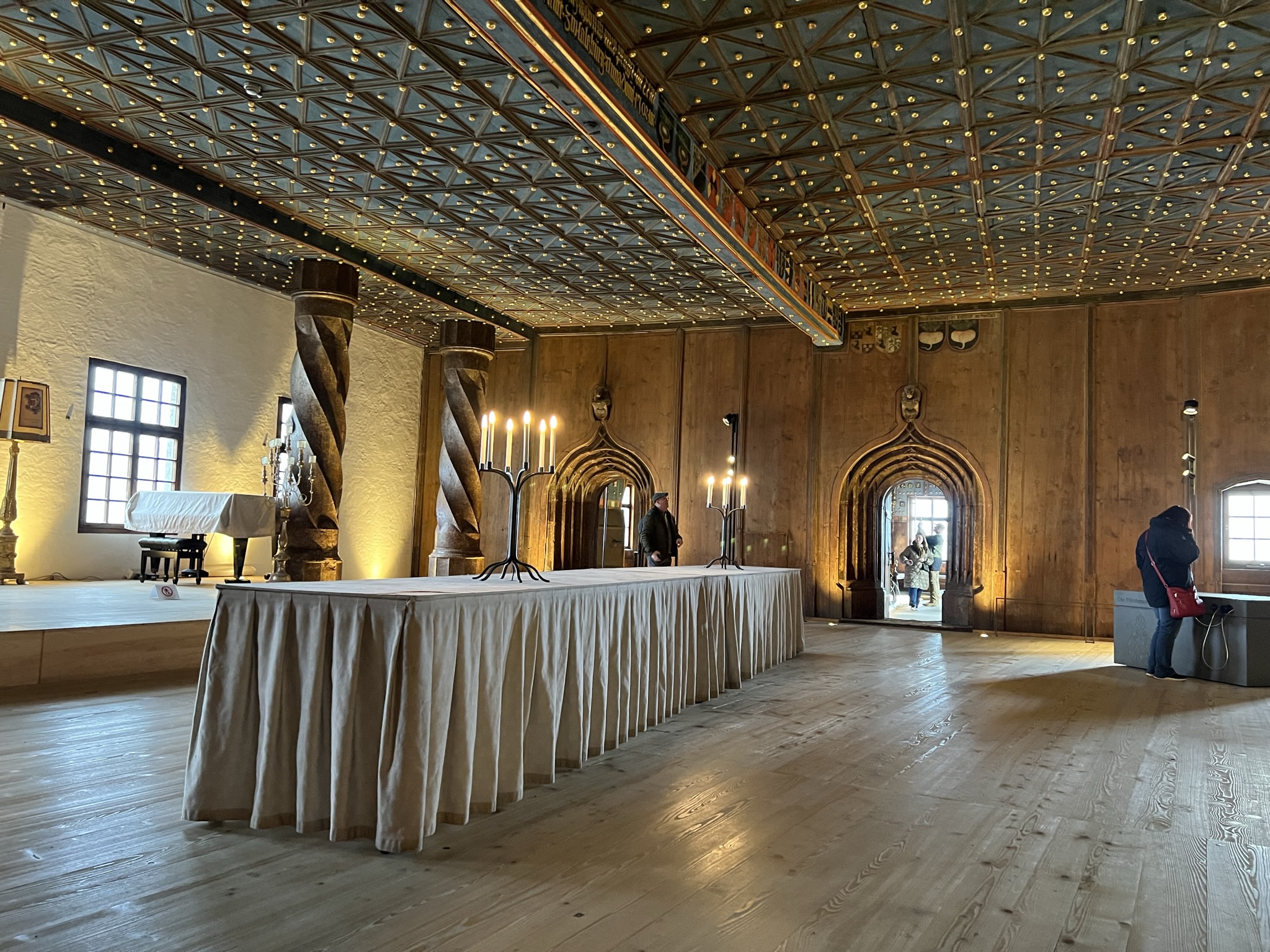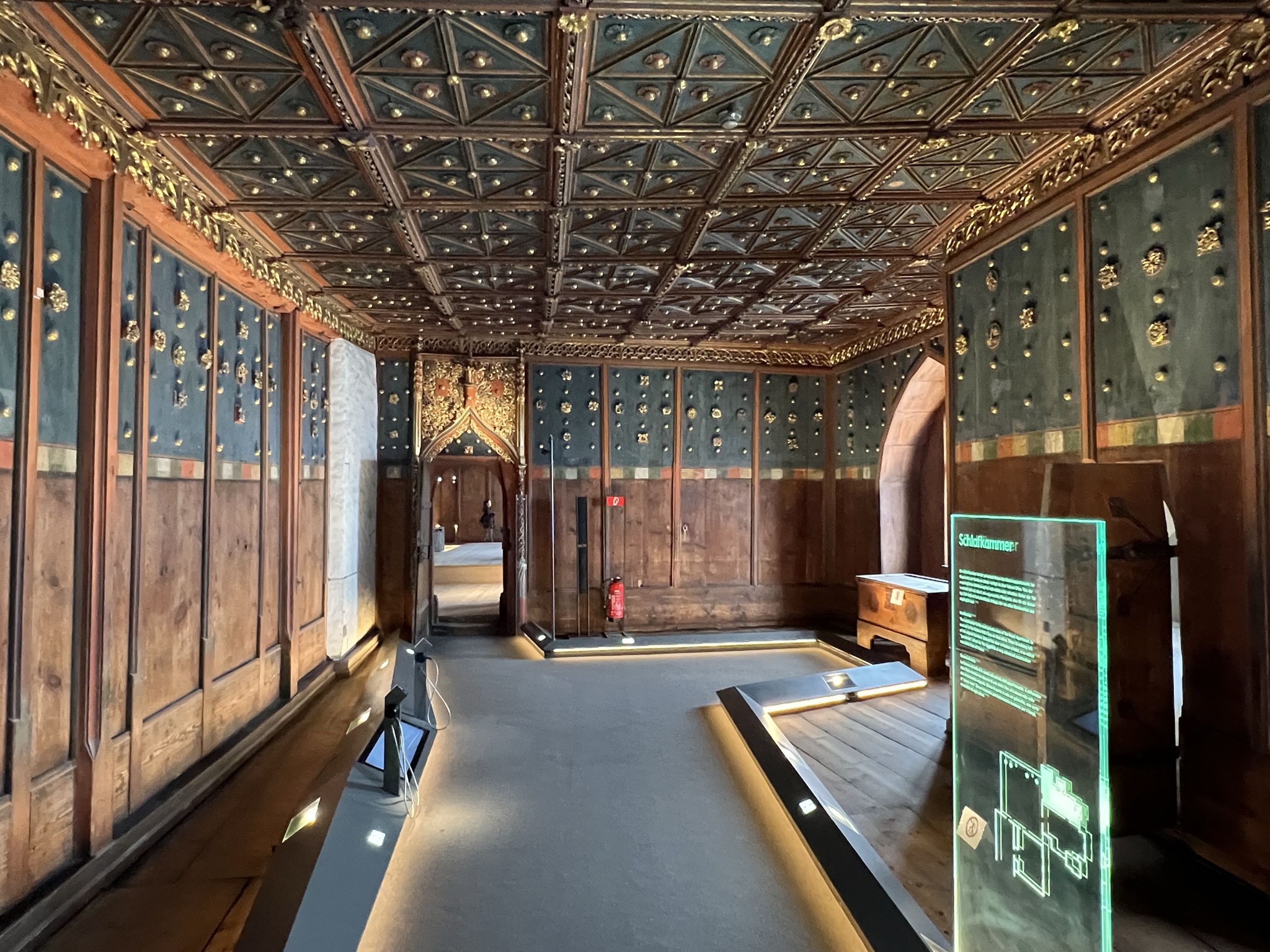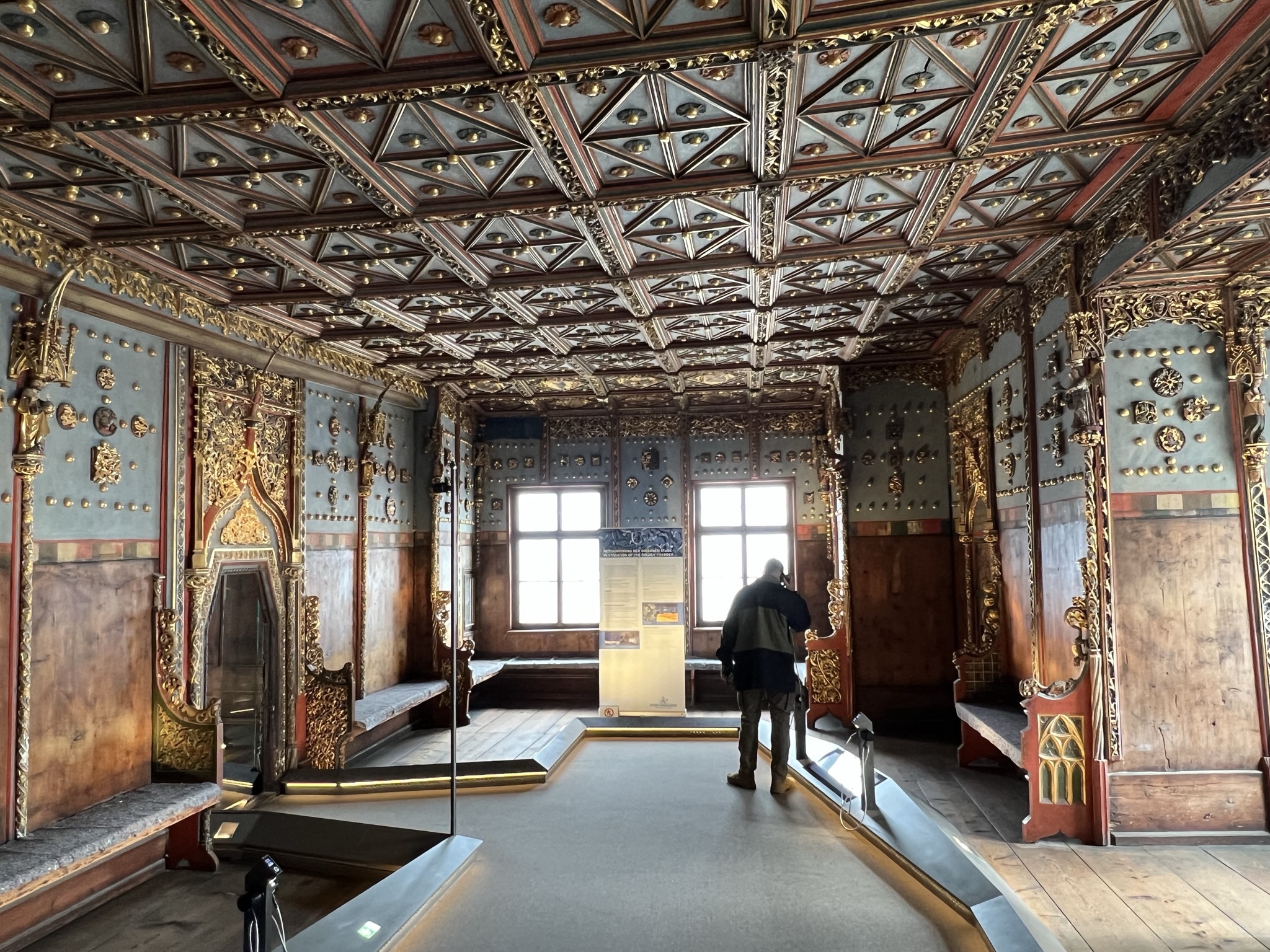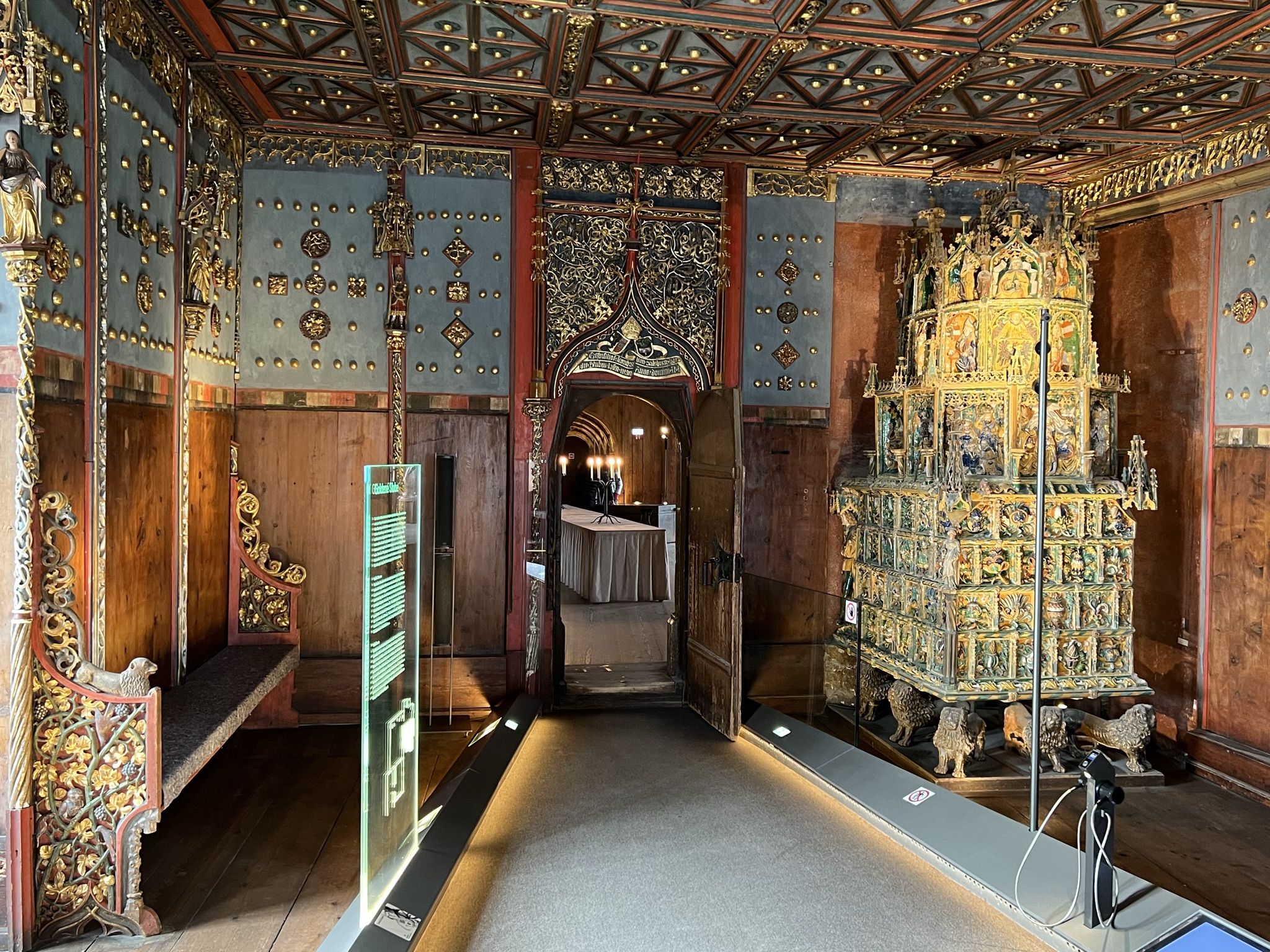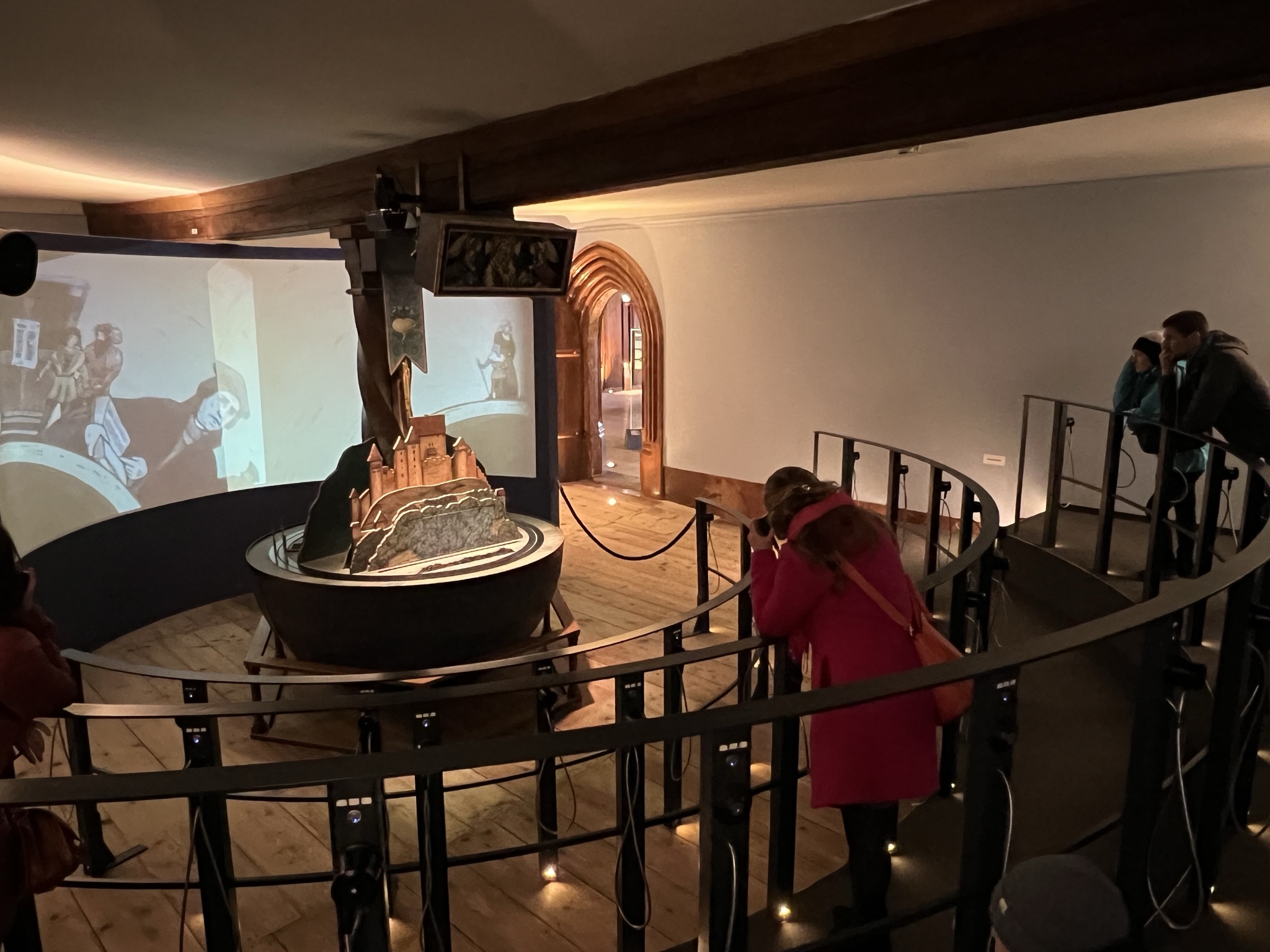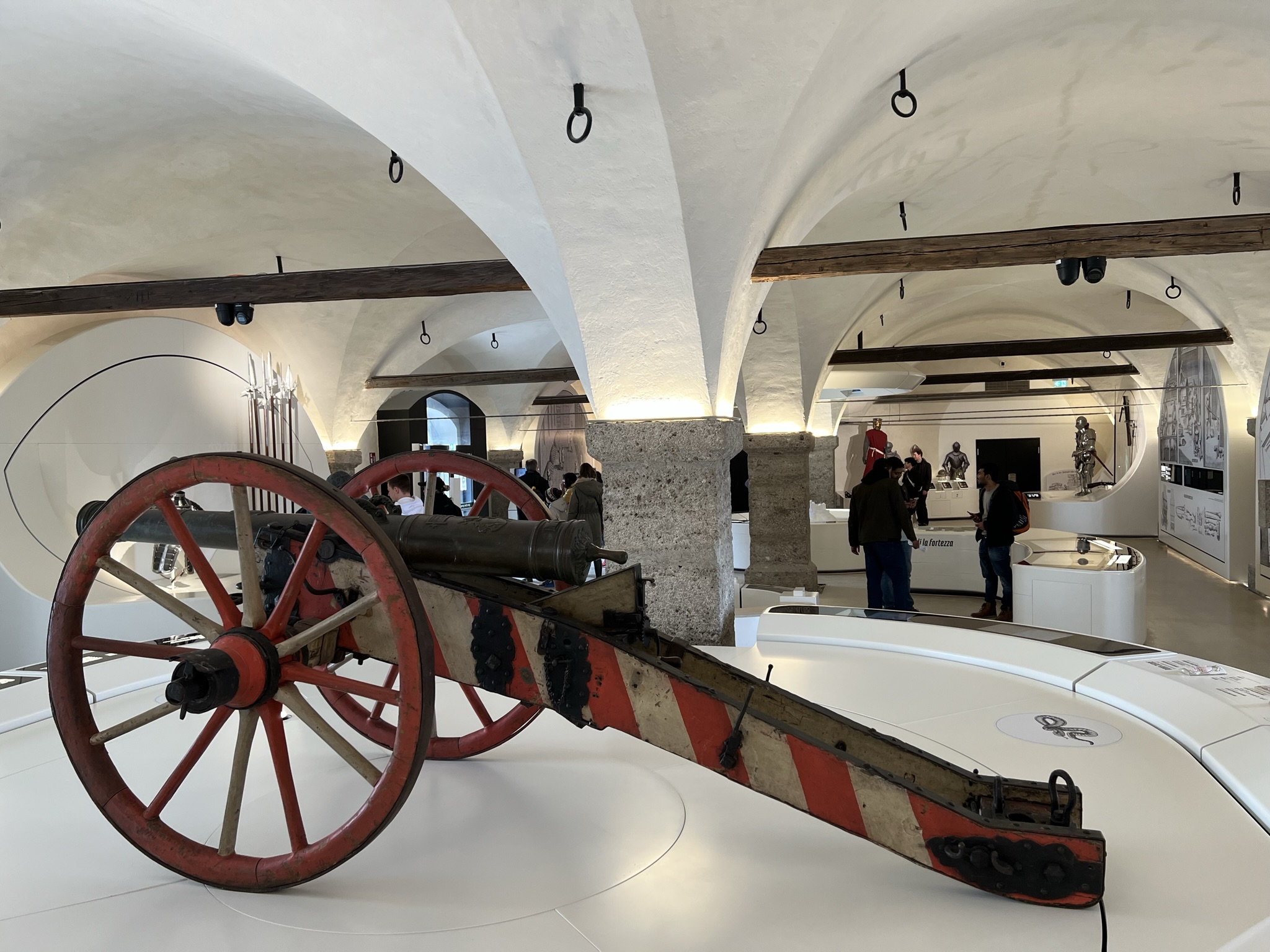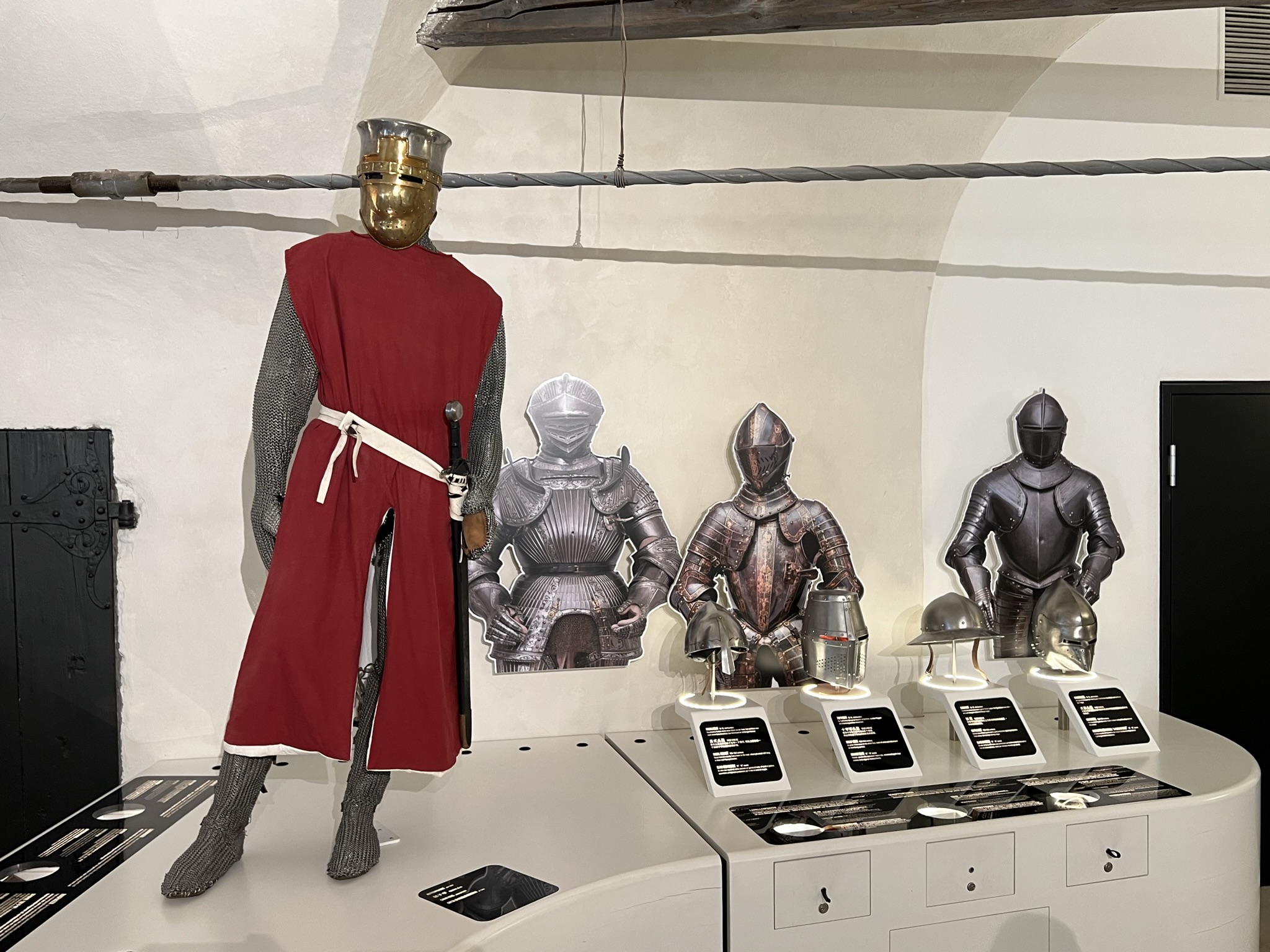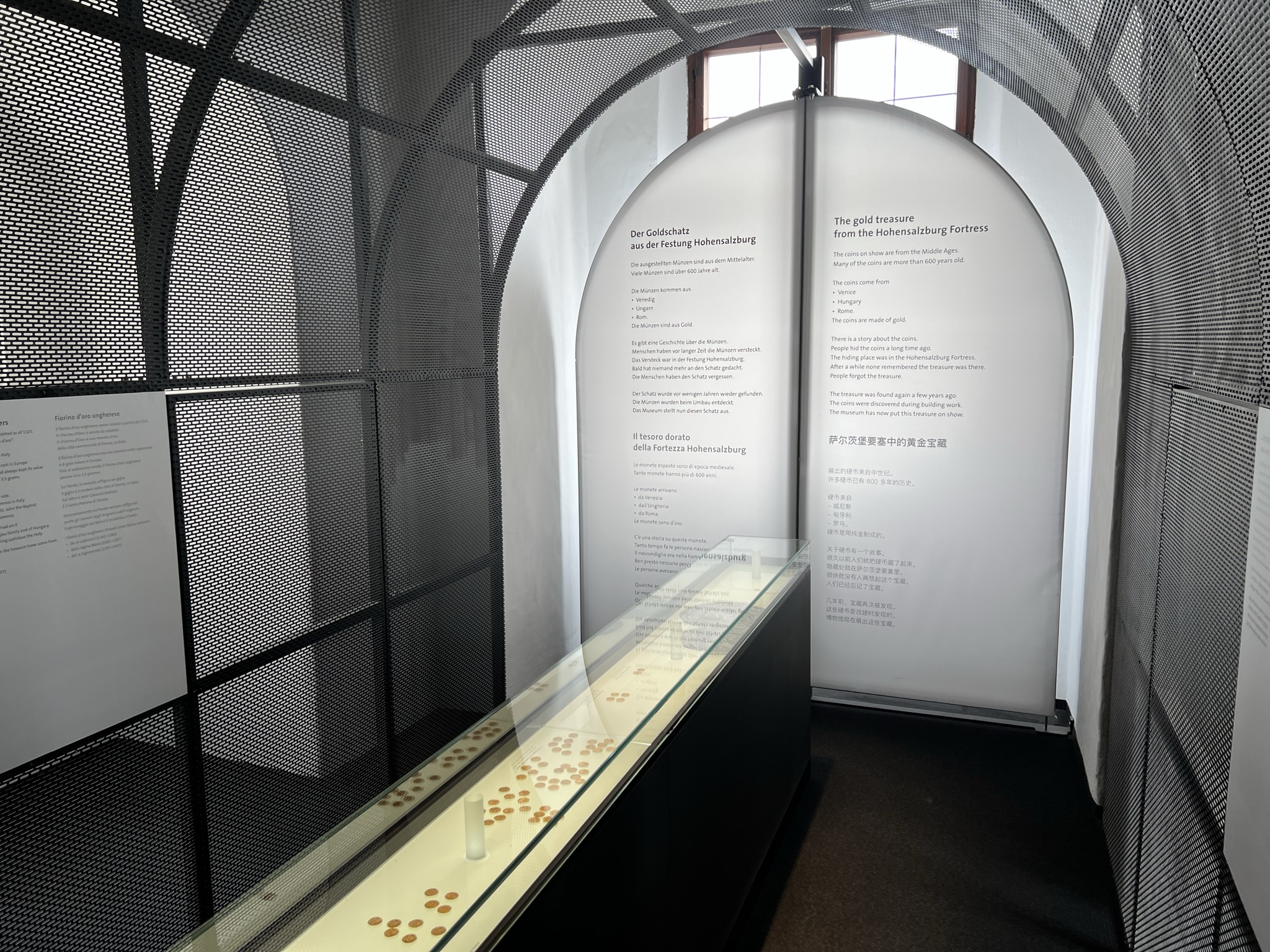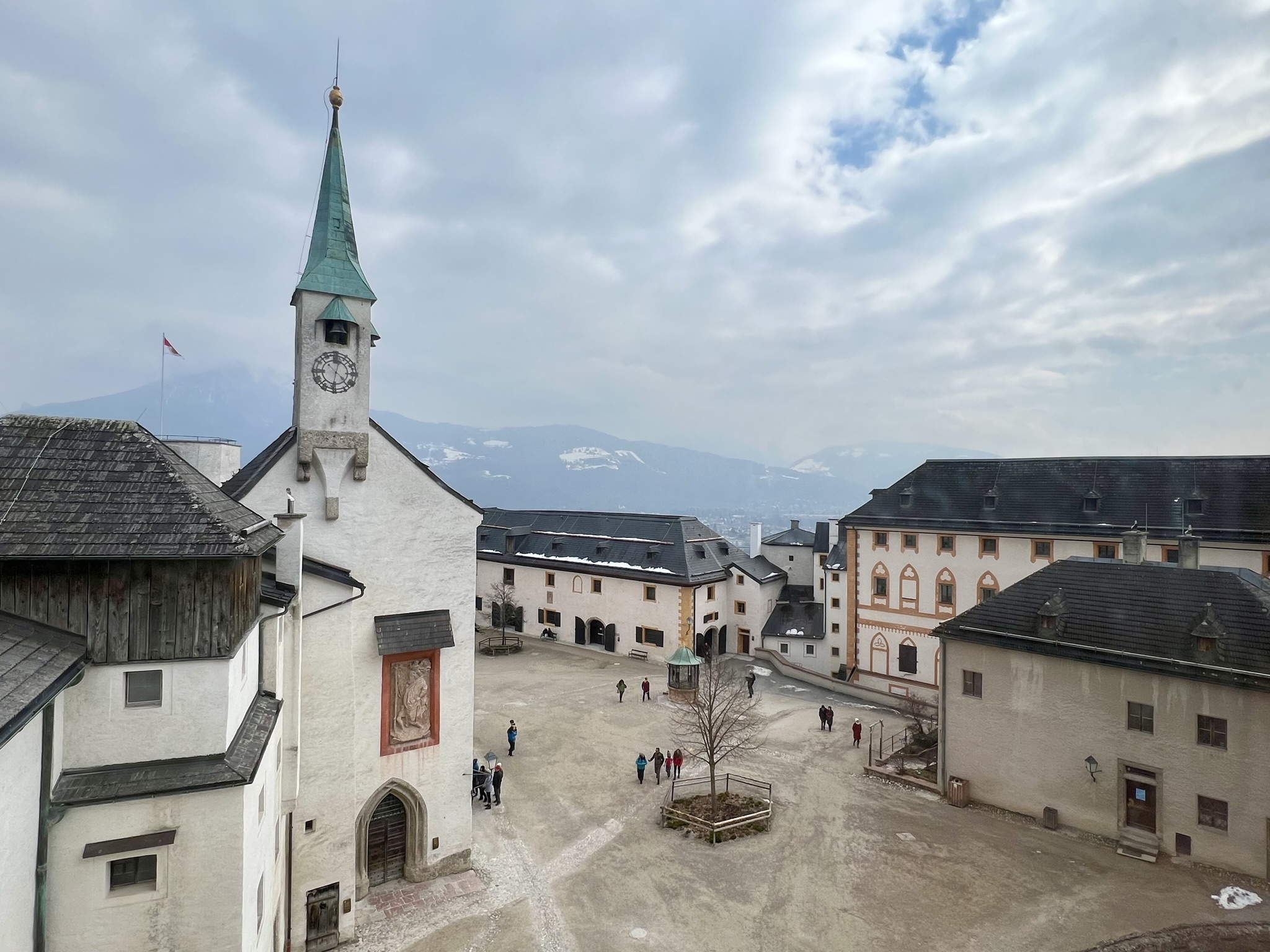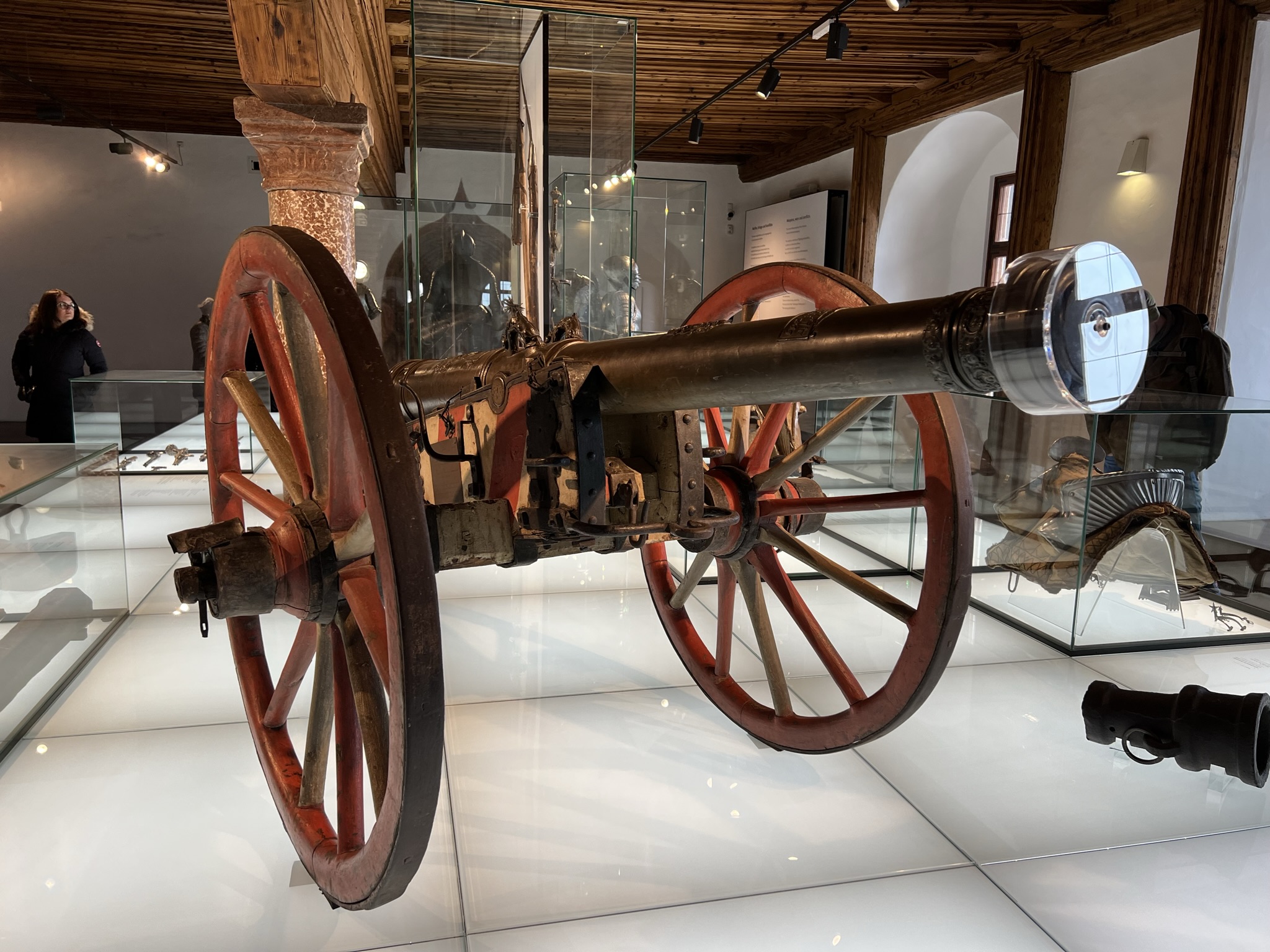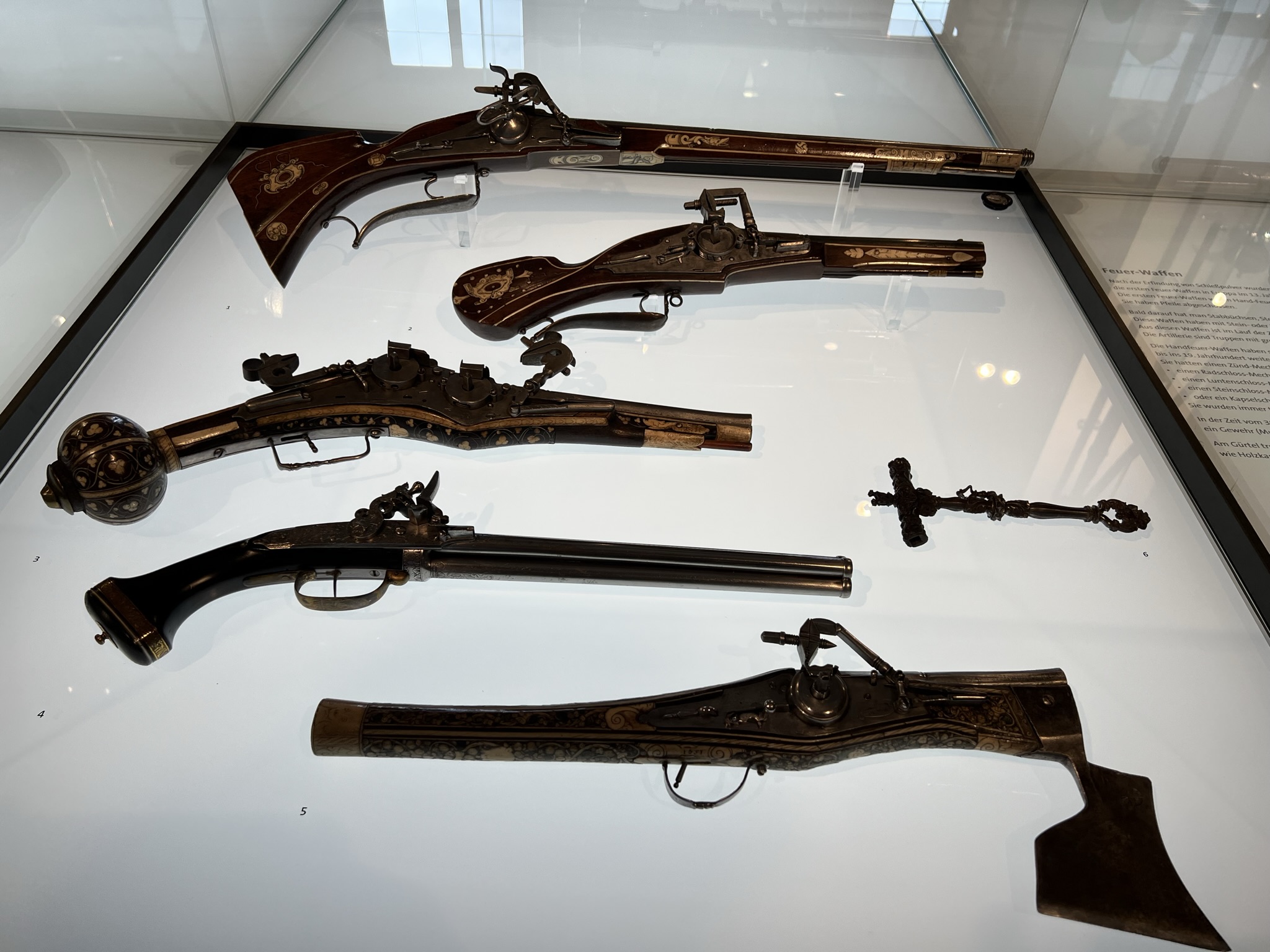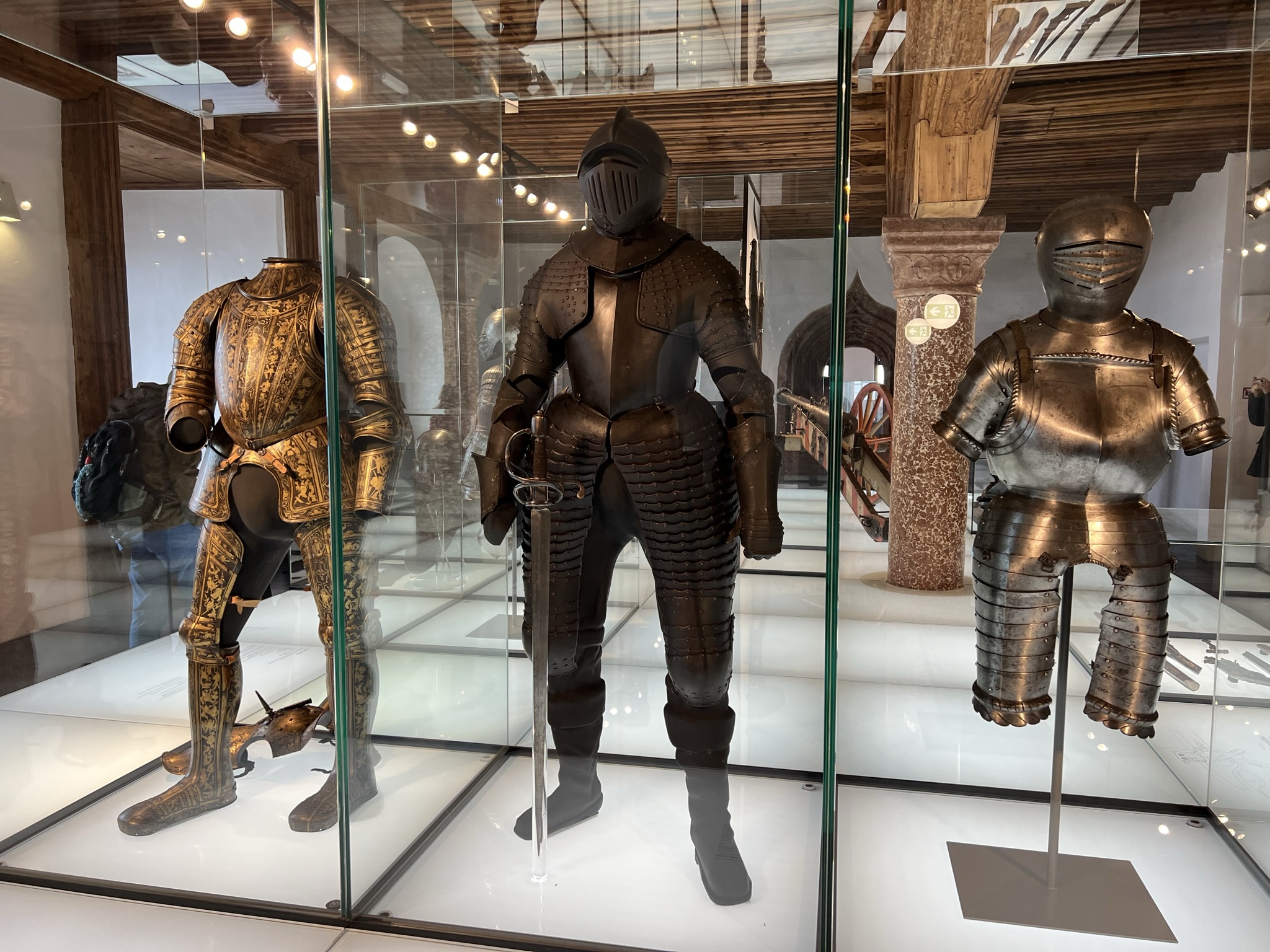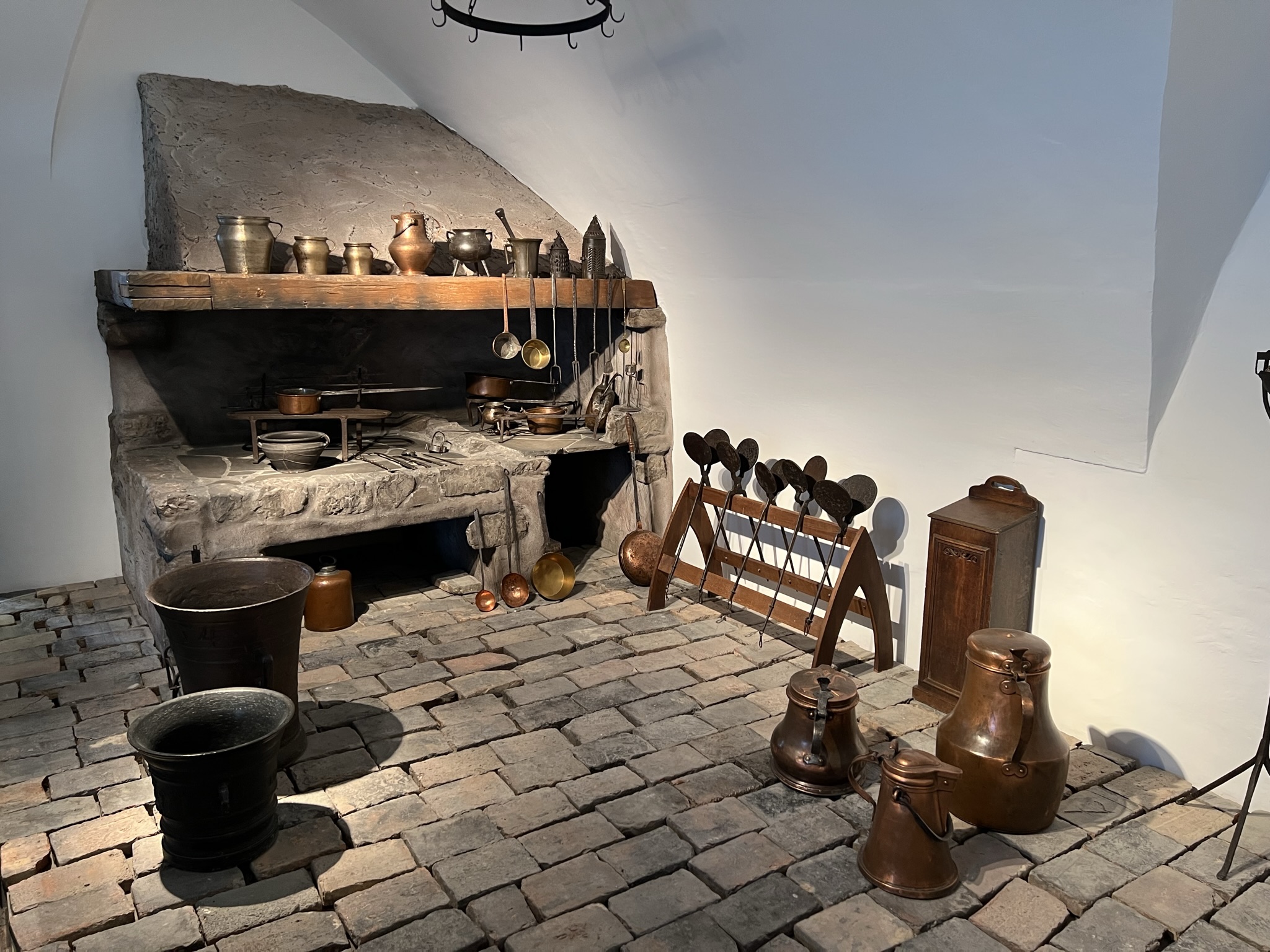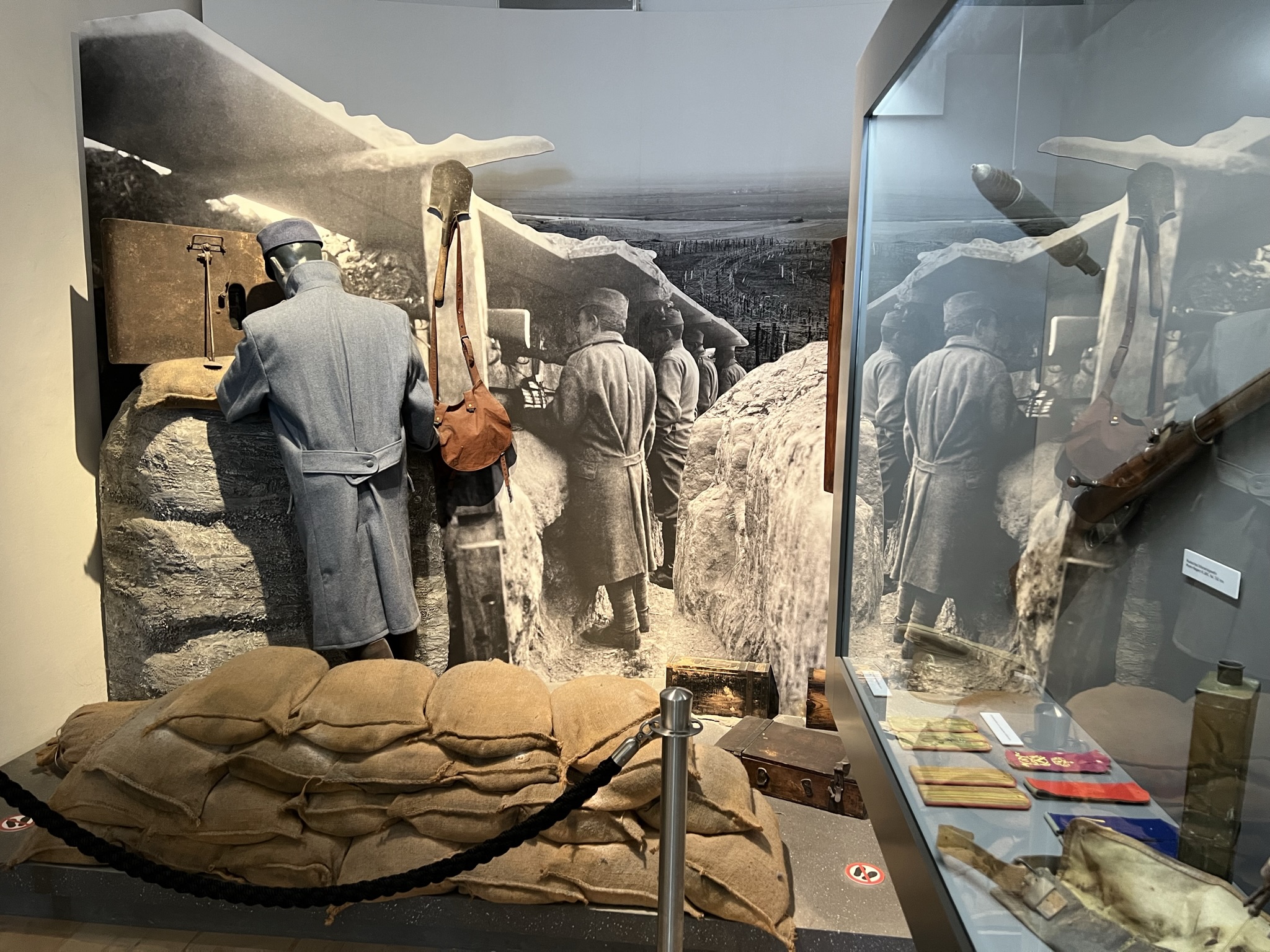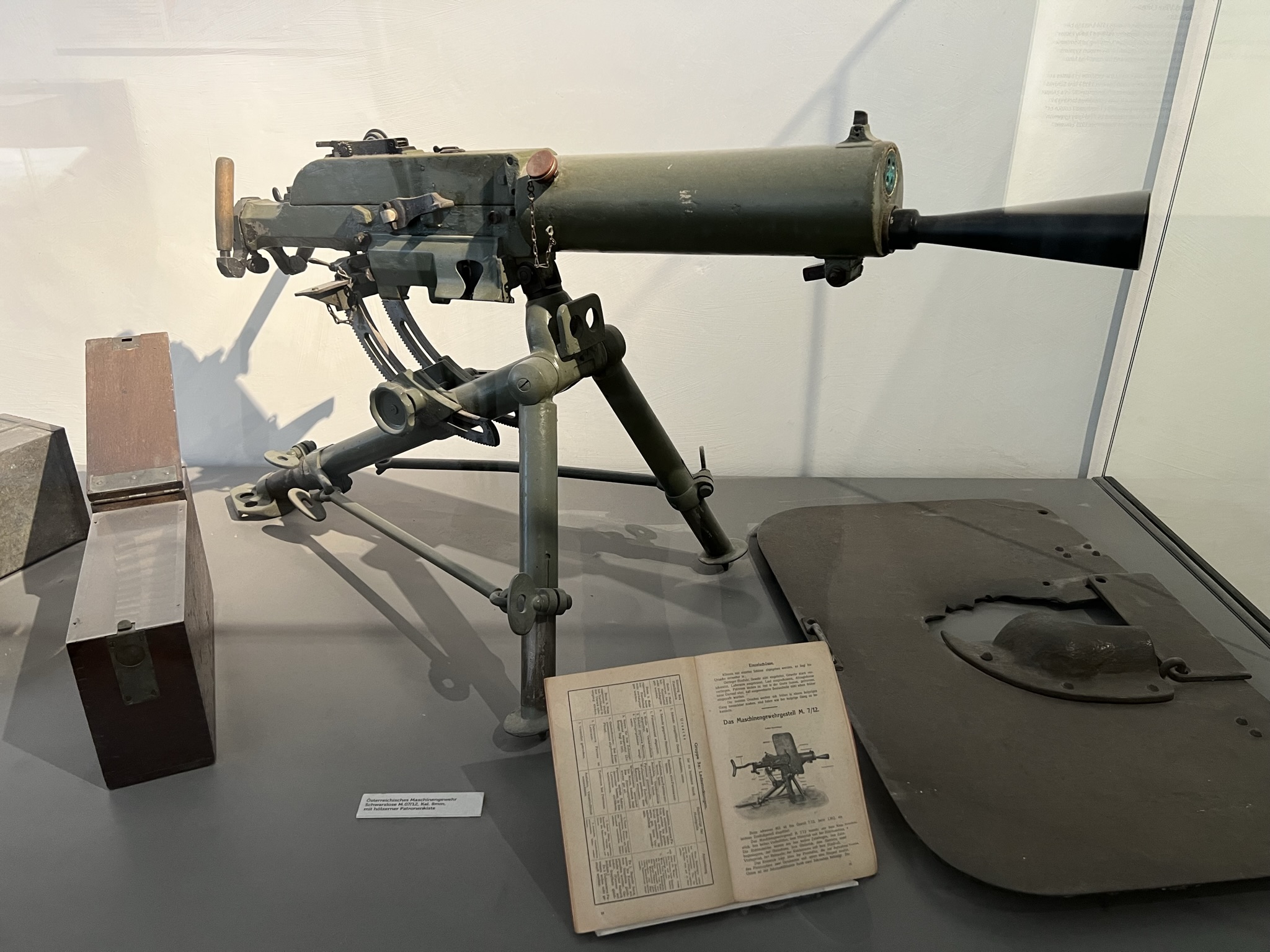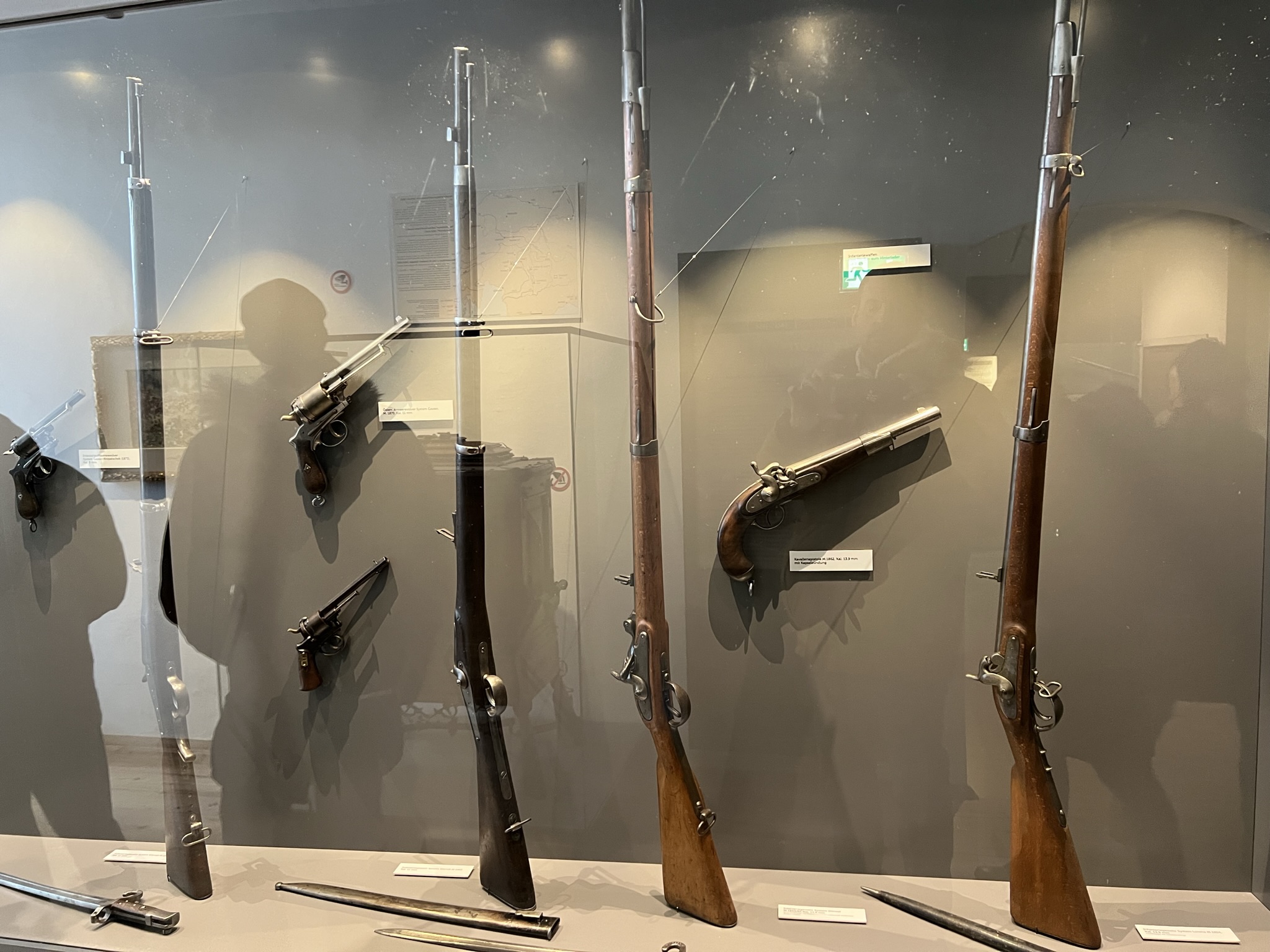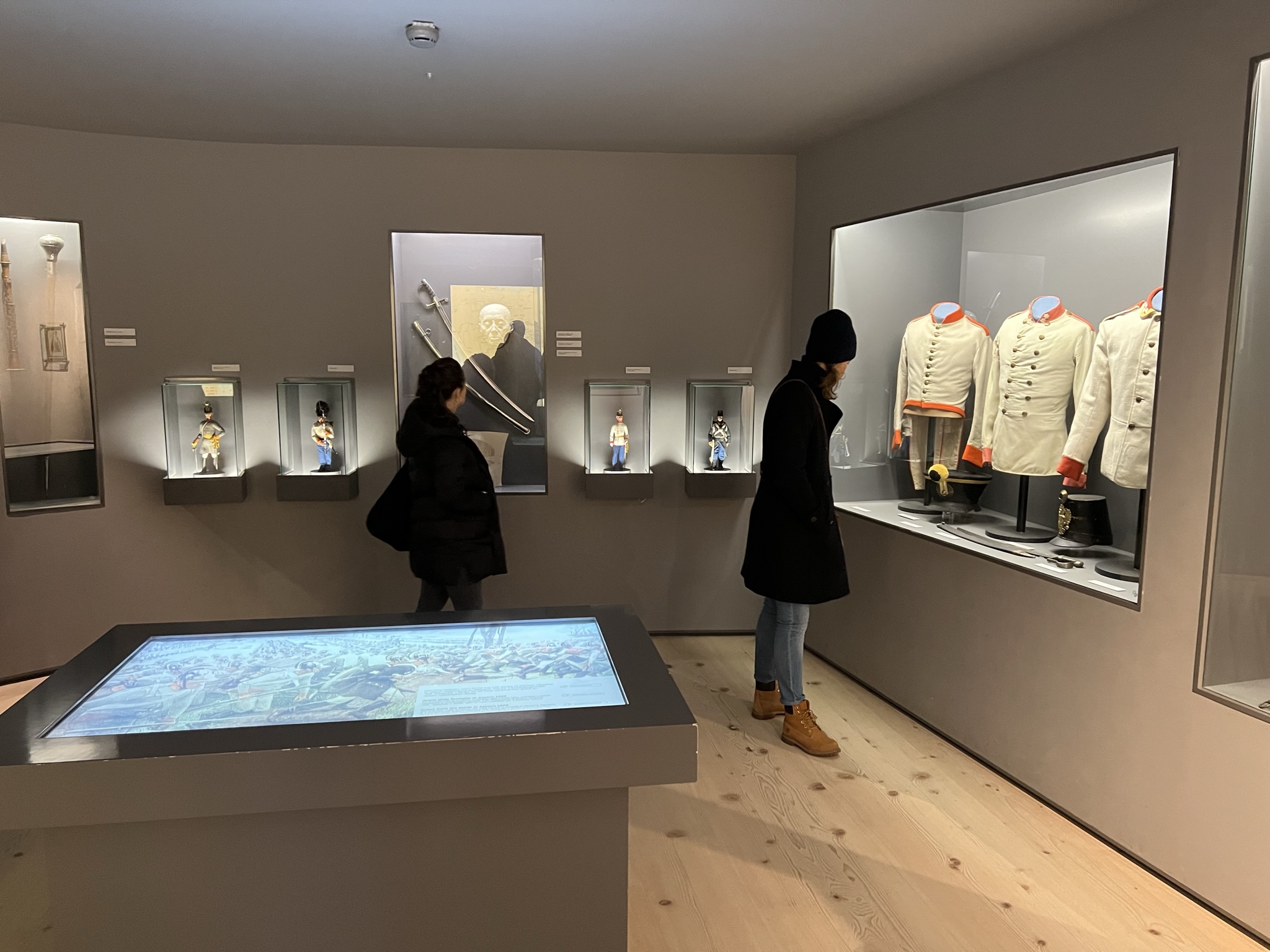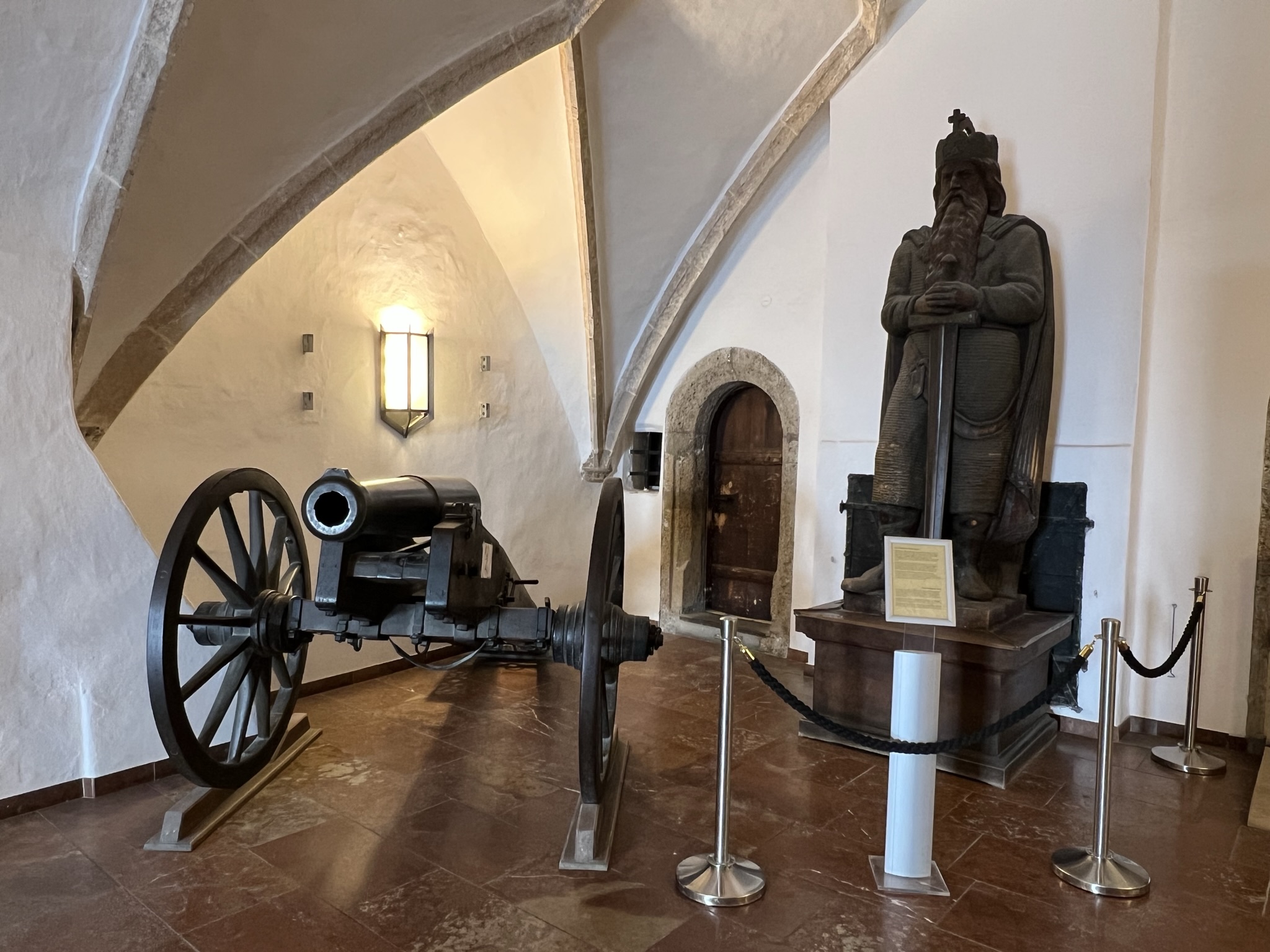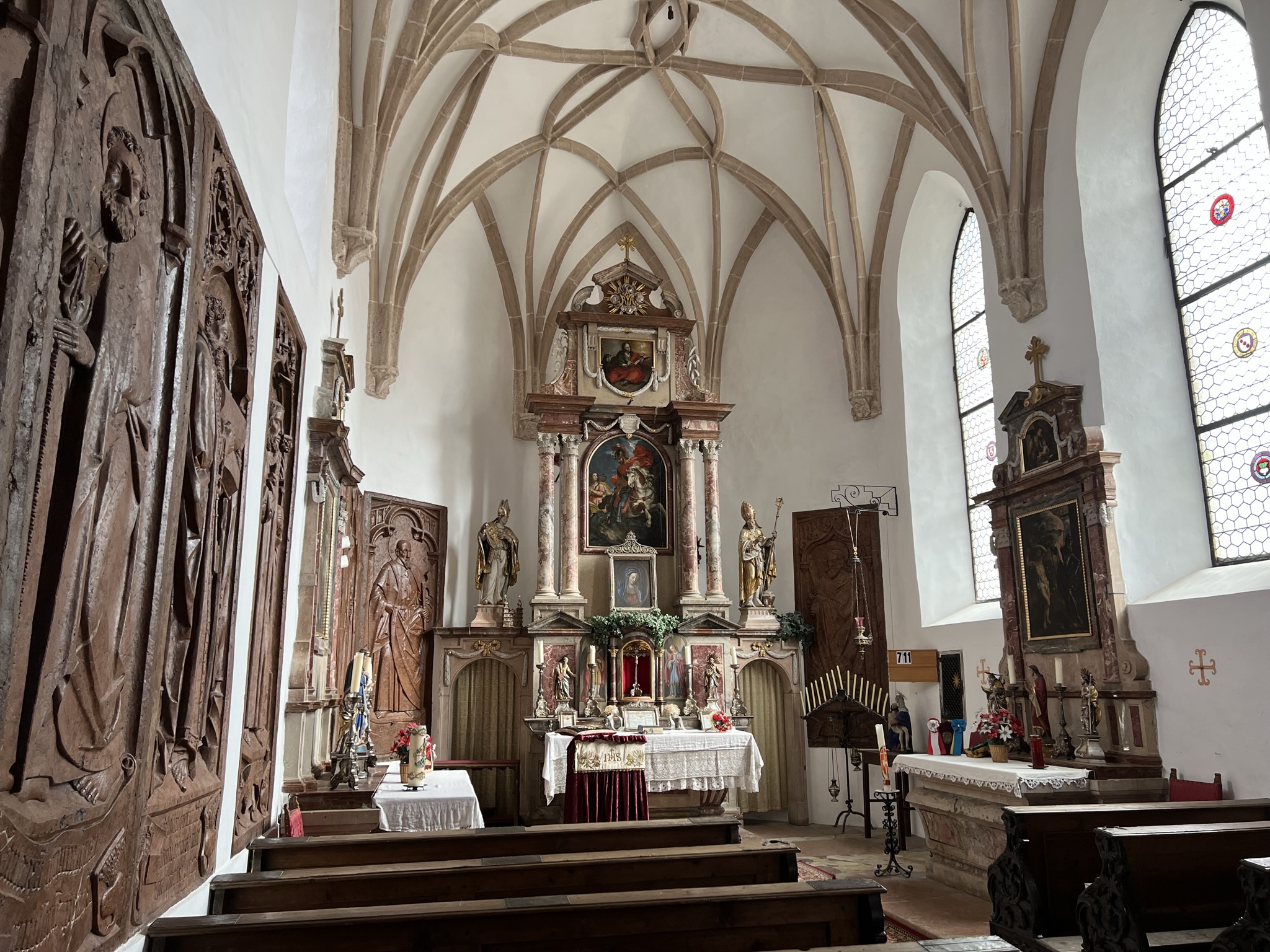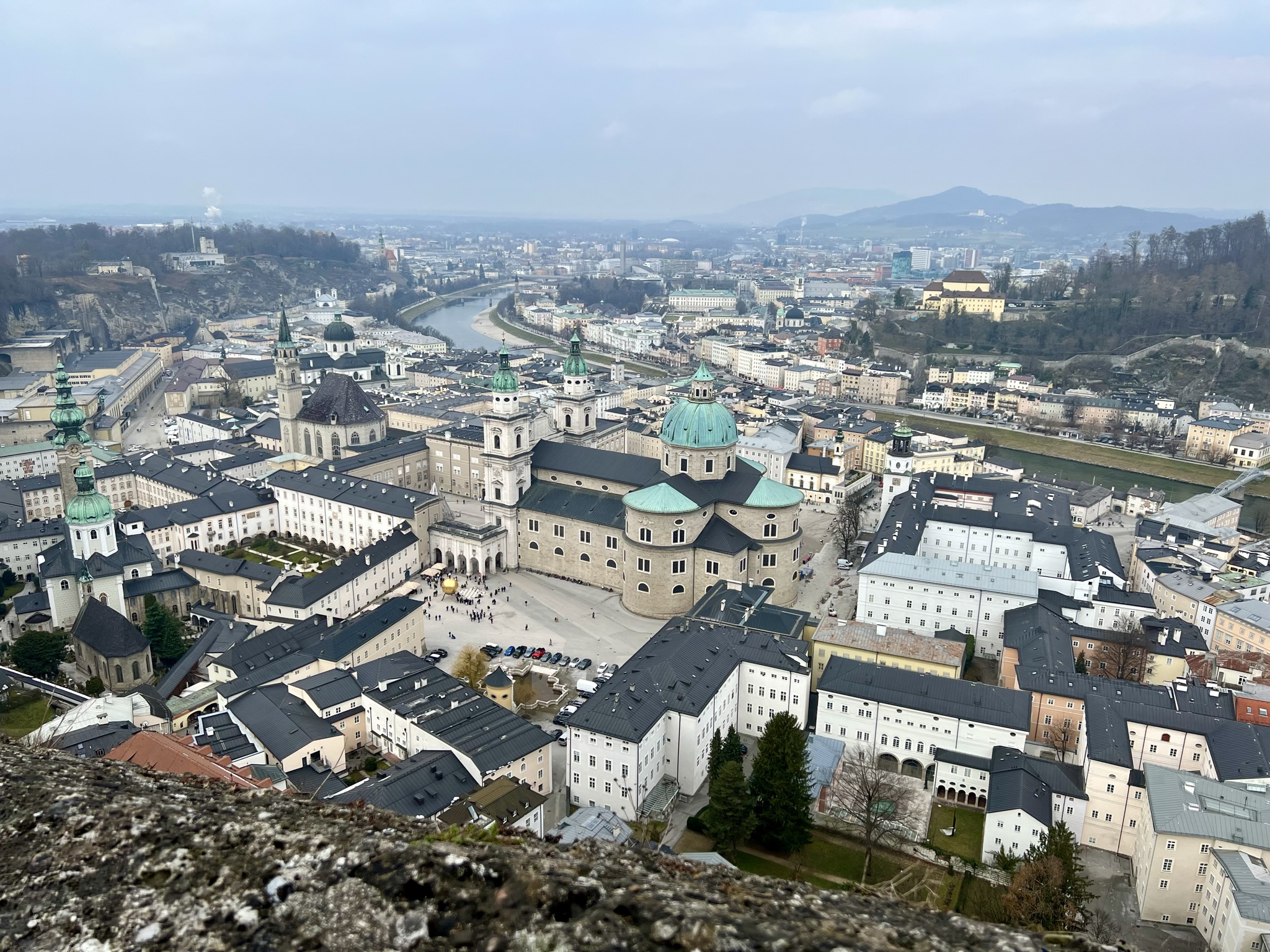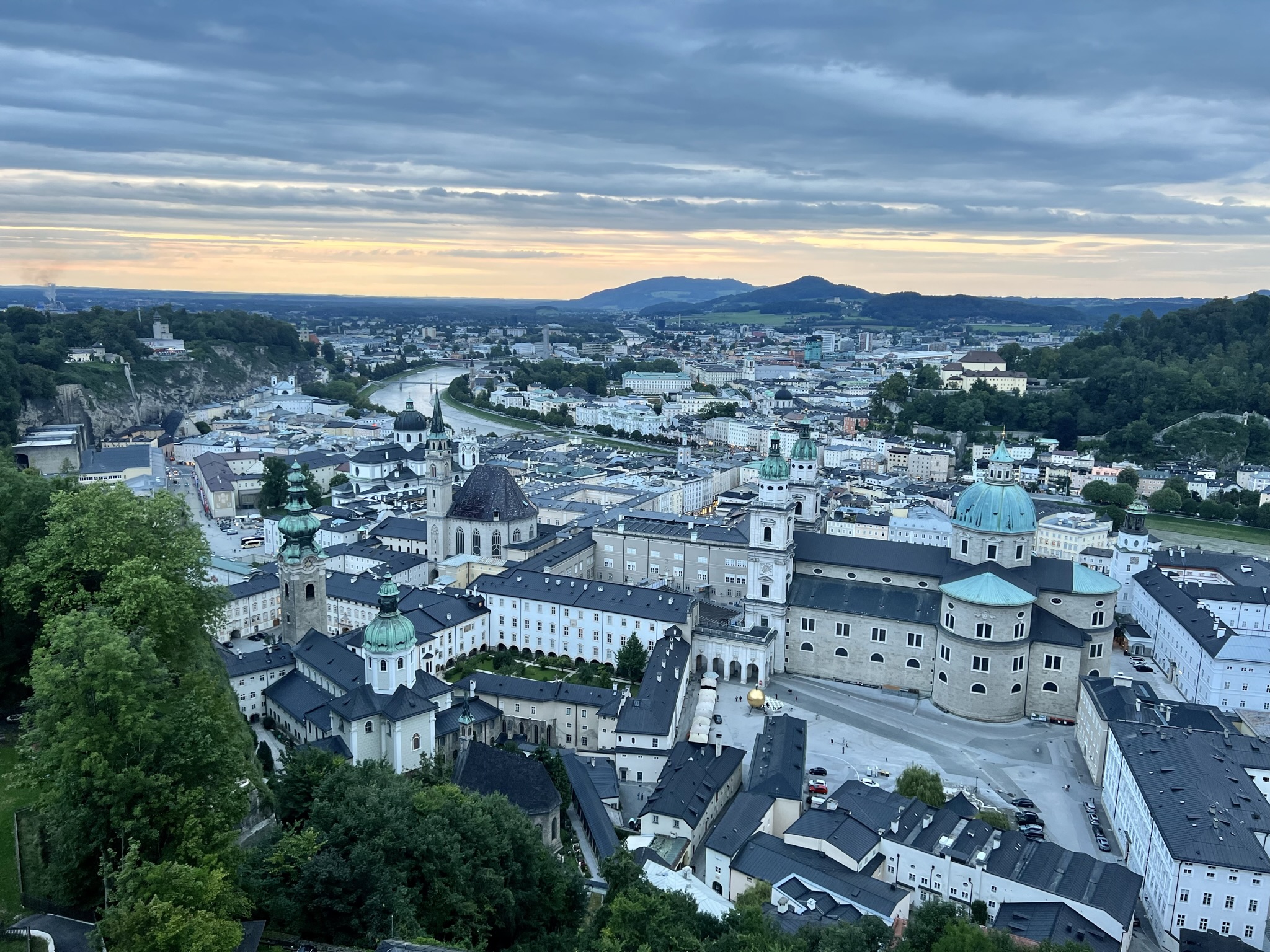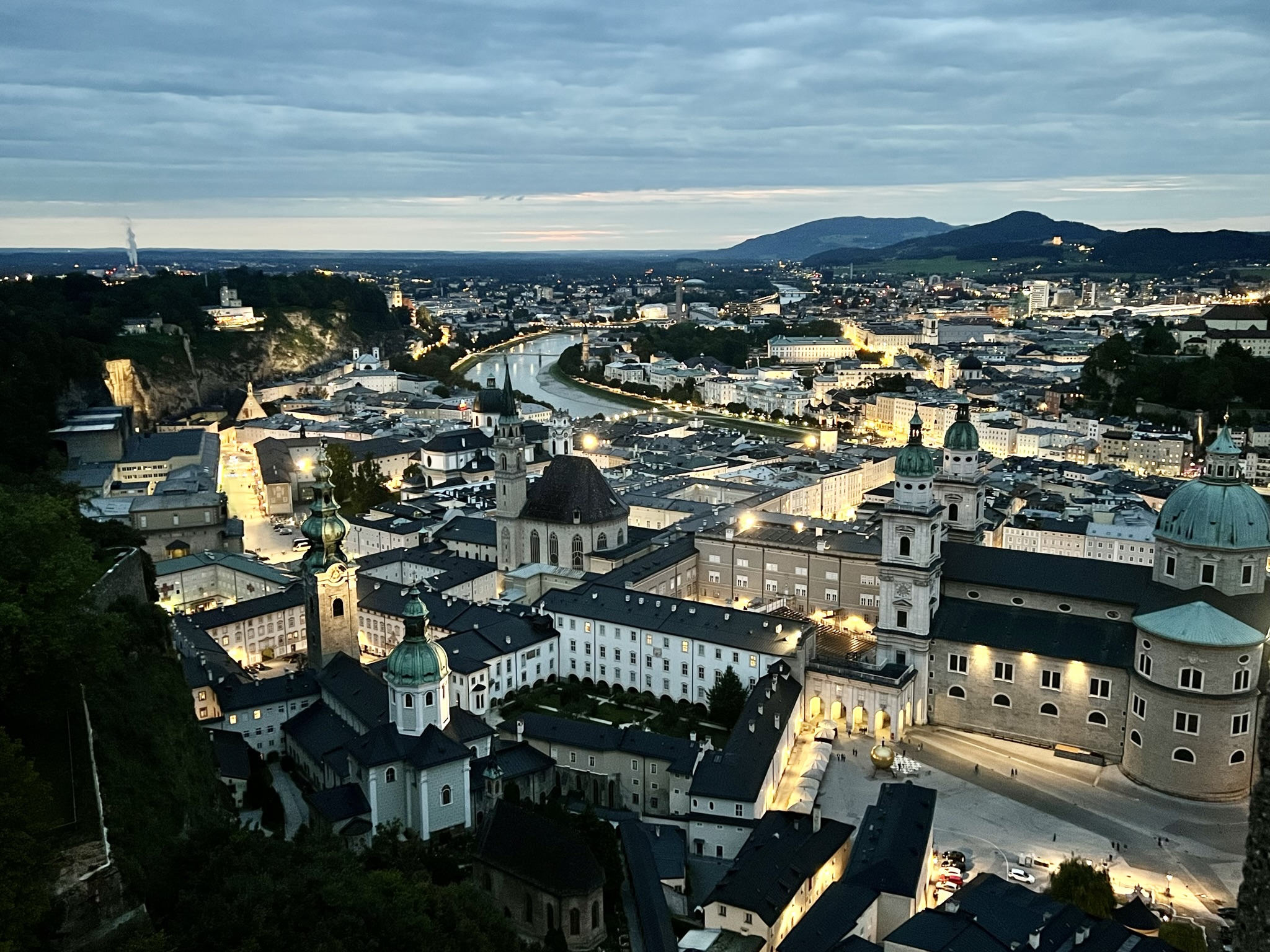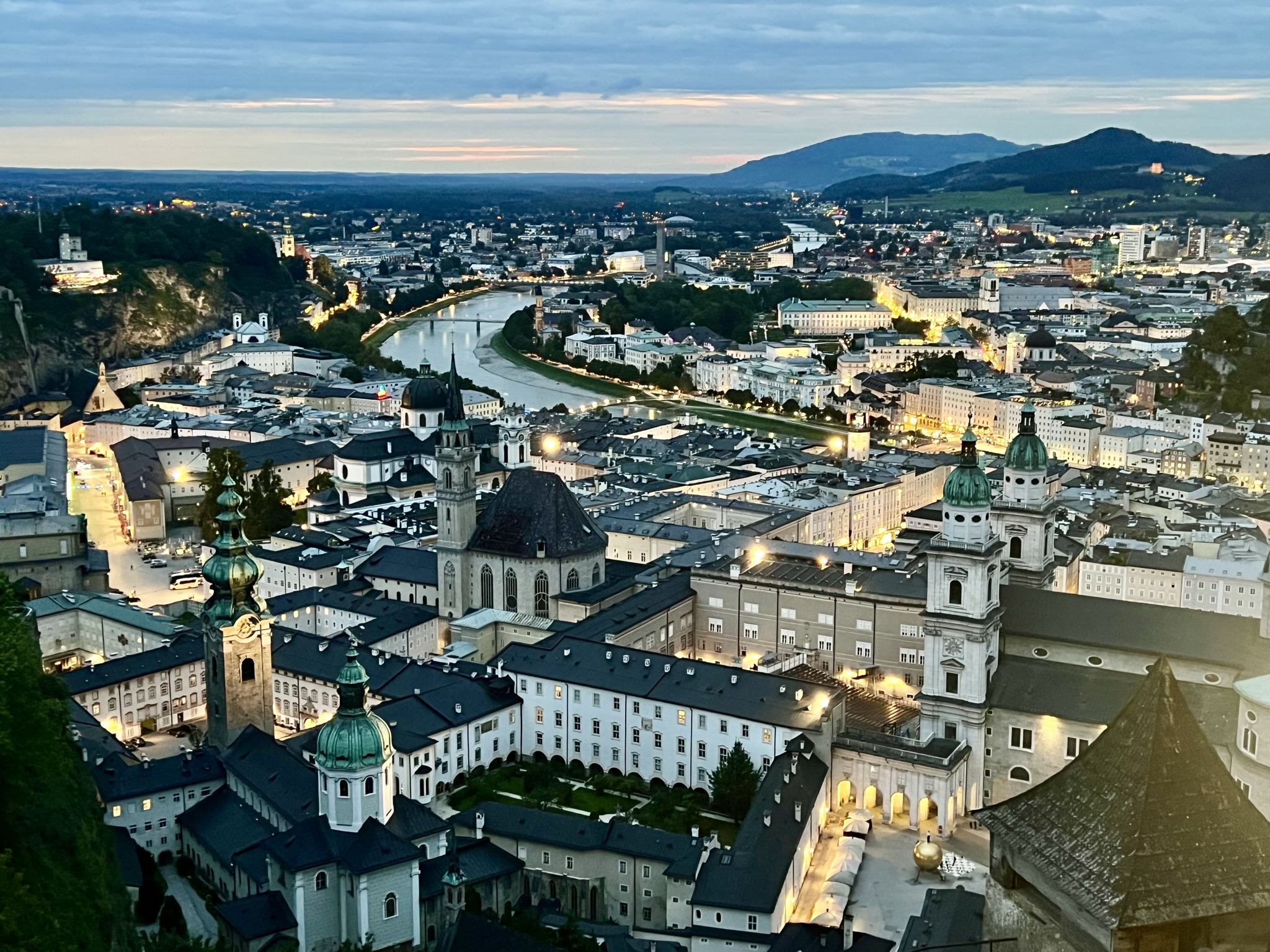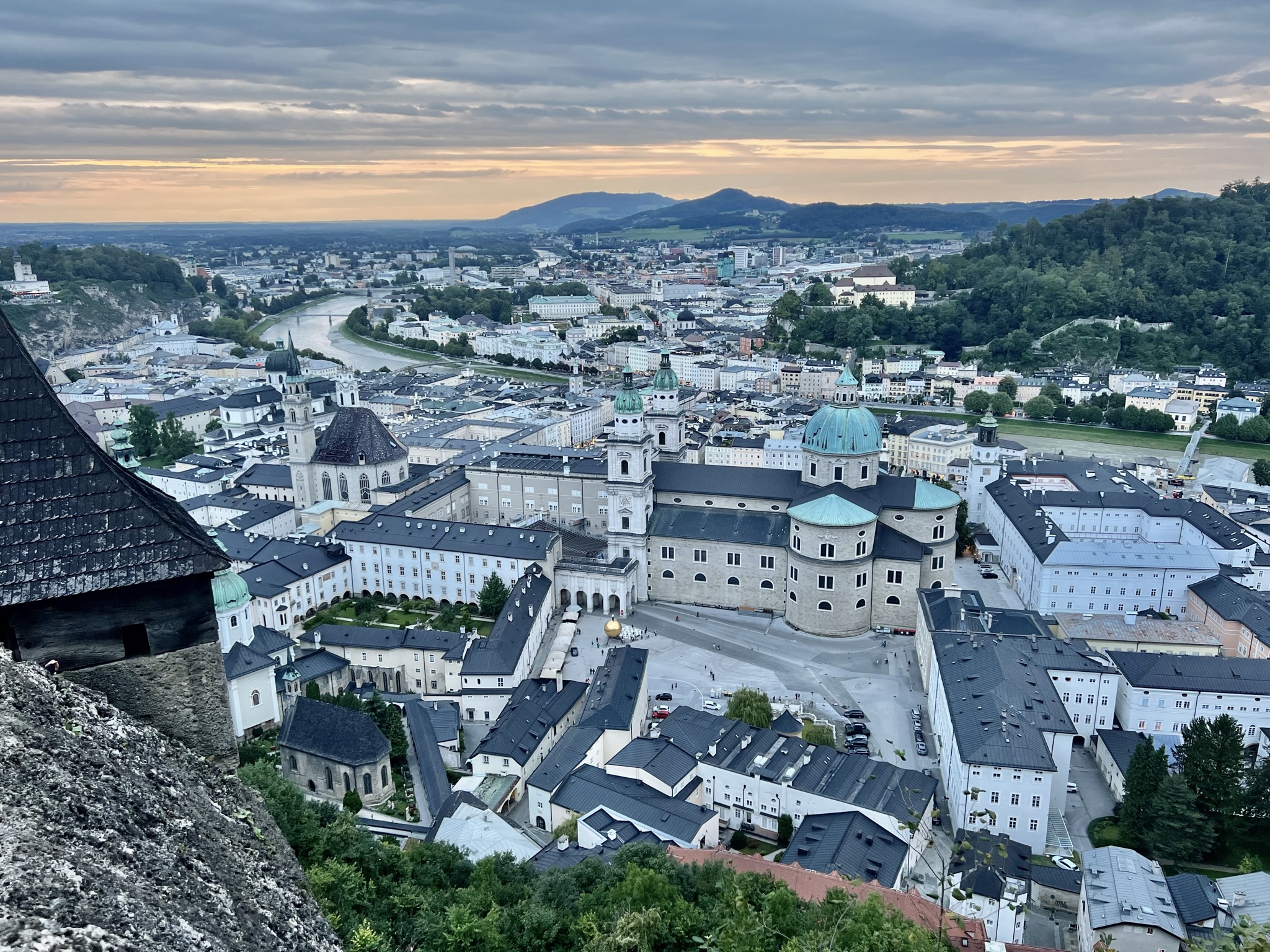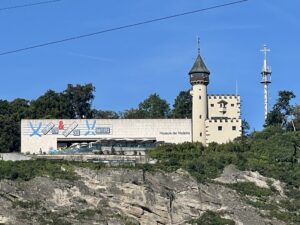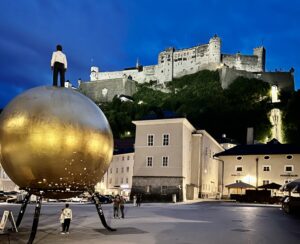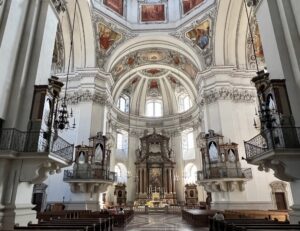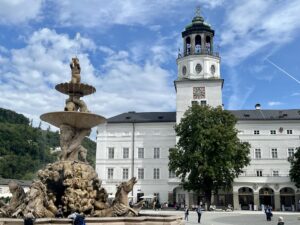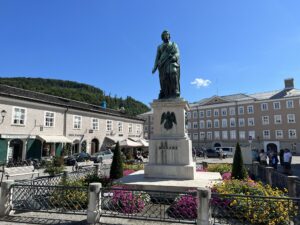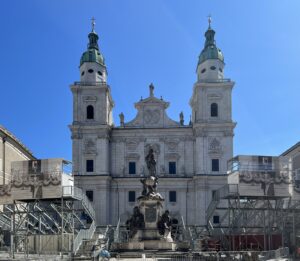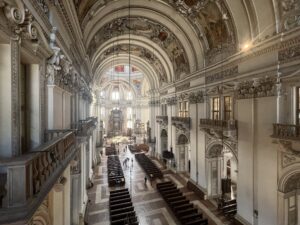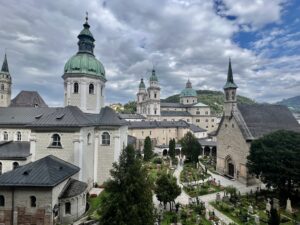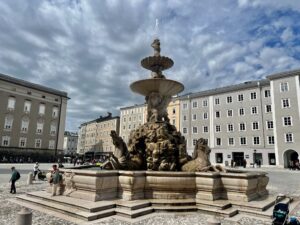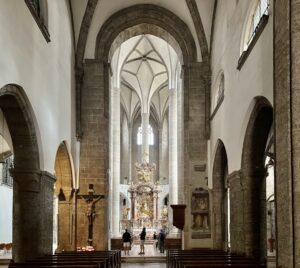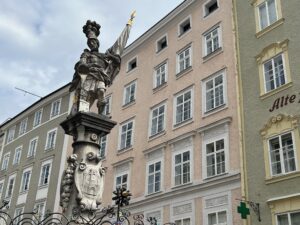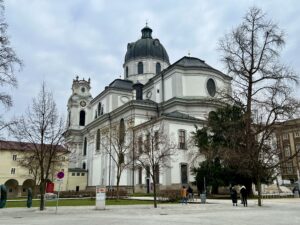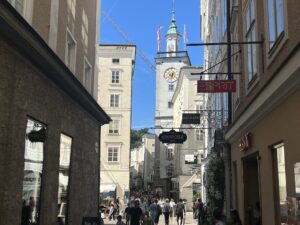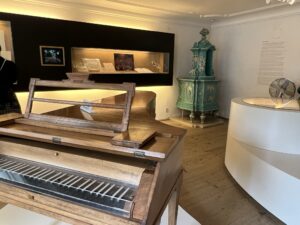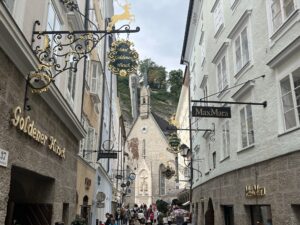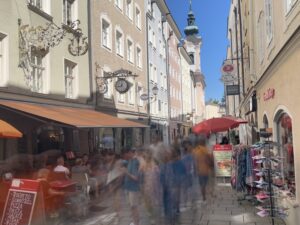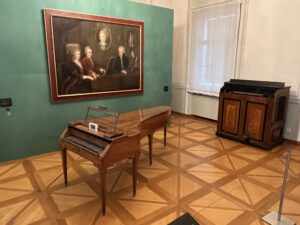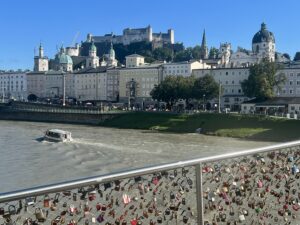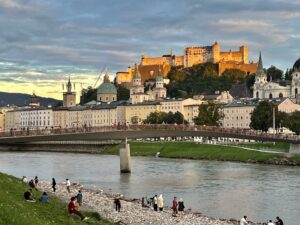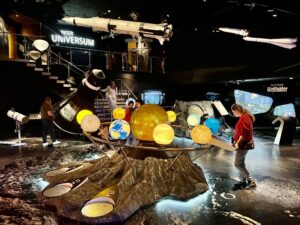Short info:
- What is special about the fortress? The Hohensalzburg Fortress is one of the largest castles in Europe. The well-preserved medieval fortress towers on a hill above the city of Salzburg and attracts thousands of visitors annually.
- Where is the fortress located? In the middle of Salzburg, address: Mönchsberg 34, 5020 Salzburg
- When is it open? All year round. Here you can find all the times.
- How much does admission cost? Here you can find all admission prices. We recommend the all-inclusive ticket with the Fortress Railway. Admission is free once with the Salzburg Card. Admission to the outdoor facilities is free for residents of the state of Salzburg.
- How do you get up to the castle? On foot, it takes about 20 minutes. The Fortress Railway runs every 10 minutes.
- How much time should I plan? 1-2 hours
General
The Hohensalzburg Fortress is an impressive medieval fortress that majestically towers above the city of Salzburg on a hill. It is one of the largest castles in Europe and was built in the 11th century. The fortress offers a breathtaking view of the city and the surrounding landscape. With over a million visitors annually, the Hohensalzburg Fortress is one of Austria’s most famous and most visited landmarks. It takes about 20 minutes to walk up the partly steep path. It takes only about 1 minute by train but costs a little more than 4€.
The history
Hohensalzburg Fortress was built in 1077 by Archbishop Gebhard of Salzburg and has since undergone numerous expansions and renovations. The castle wall around the fortress was renewed during the first peasant uprisings and the first threat from the Turks from 1465-1485 and strengthened by Leonhard von Keutschach around 1500. Paris Lodron turned the medieval castle into a fortress by providing it with a strong outer ring of artillery bastions.
Over the centuries, the fortress became an important military base and was also used as a residence of the Salzburg archbishops. The fortress played an important role in the history of the city and was also of strategic importance in both world wars. With over 7,000 m², including the bastions with over 14,000 m² of built-up area, the fortress is one of the largest castles in Europe.
The castle today
Today, Hohensalzburg Fortress is a popular tourist destination and an important cultural site. Visitors can reach the fortress either on foot or by cable car. The fortress offers breathtaking views of the city of Salzburg and the surrounding mountains.
There are a variety of sights and attractions to discover in Hohensalzburg Fortress. Here are some of the most important:
Castle Museum: In the Castle Museum, visitors can admire a large collection of historical exhibits that tell the history of the fortress and the city of Salzburg. There are medieval armor, weapons, and tools to see.
Prince’s Chambers: The Prince’s Chambers are the luxurious living quarters of the Salzburg archbishops and offer an insight into the lifestyle of the wealthy and powerful rulers.
Rainer Regiment Exhibition: This exhibition shows the daily life of soldiers in the Rainer Regiment during the 19th century. Visitors can see historical uniforms, weapons, and other equipment.
Weapon Exhibition: In the Weapon Exhibition, visitors can admire an impressive collection of historical weapons and armor from various eras.
Fortress Concerts: The Fortress Concerts are a highlight for music lovers. In the Golden Hall of the fortress, visitors can enjoy classical music pieces by Mozart and other famous composers.
Torture Chamber: The Torture Chamber displays some of the cruel tools that were used during the Middle Ages to torture prisoners.
Overall, there are many interesting sights to discover in Hohensalzburg Fortress. We recommend that every visitor take the time to explore the fortress and its attractions thoroughly. 2 hours should be sufficient for this. On the castle’s website, you will also find various options for tours and various events.
In summary, Hohensalzburg Fortress is an important cultural site and a popular tourist destination. The fortress offers an insight into the history of the city of Salzburg and the region. From several points, there is a beautiful view of the city.



